
agentlang
Generative AI-powered Programming Language
Stars: 120
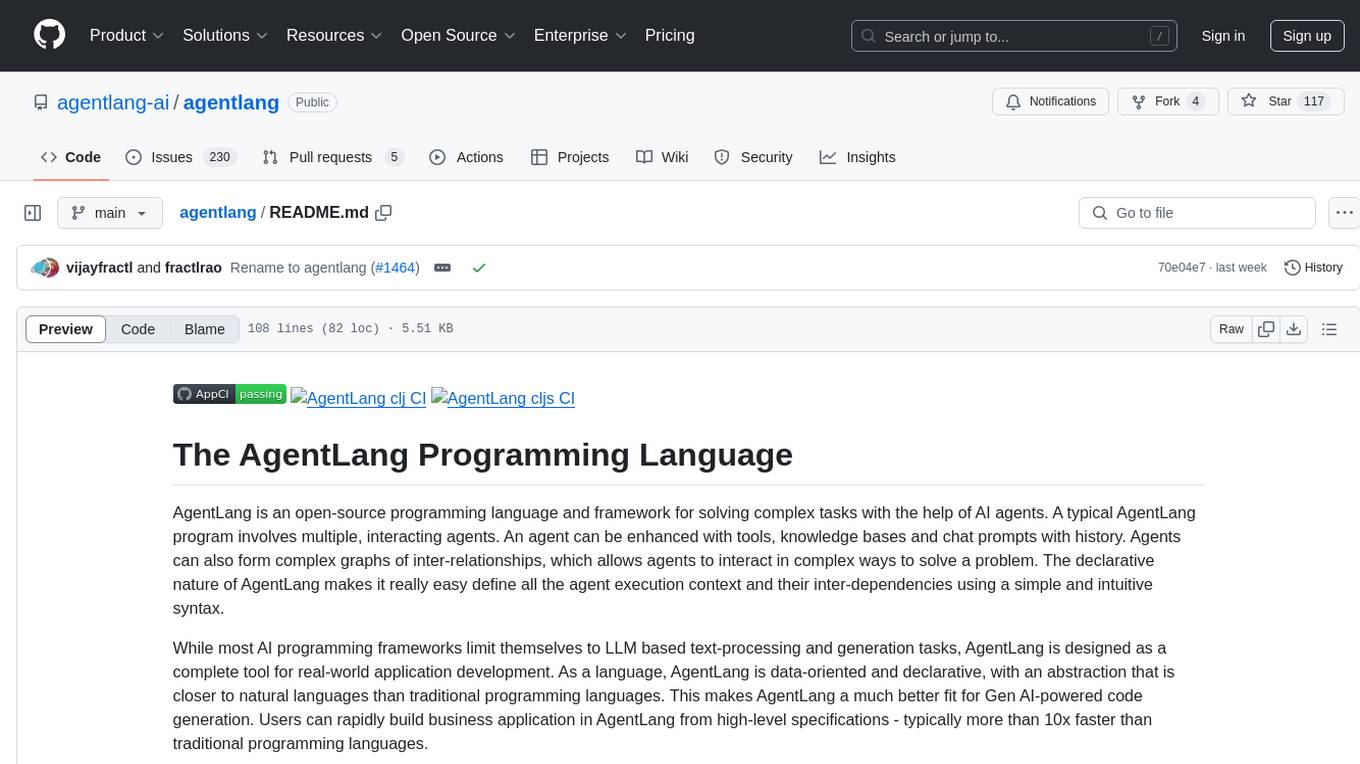
AgentLang is an open-source programming language and framework designed for solving complex tasks with the help of AI agents. It allows users to build business applications rapidly from high-level specifications, making it more efficient than traditional programming languages. The language is data-oriented and declarative, with a syntax that is intuitive and closer to natural languages. AgentLang introduces innovative concepts such as first-class AI agents, graph-based hierarchical data model, zero-trust programming, declarative dataflow, resolvers, interceptors, and entity-graph-database mapping.
README:
AgentLang is the easiest way to build AI Agents, Chatbots and Apps - build teams of AI agents that collaborate (with other AI agents and humans) to handle complex, time-consuming, monotonous tasks. AgentLang is a data-oriented, declarative abstraction for building agents and apps, similar to how Terraform is a declarative abstraction for infrastructure-as-code.
The AgentLang language specification, its compiler and runtime are open source. AgentLang programs can run anywhere - avoiding the vendor lock-in of other AI agent/programming platforms.
AgentLang runtime has native integration with databases, vector databases, auth stores, etc. AgentLang programs run on the JVM and can make use of any of the millions of existing Java/Clojure and other JVM libraries out there.
AgentLang comes with all the modern tooling, dependency management and REPL needed to build production-grade agents and apps.
Agents are a built-in language construct - developers can choose from one of the built-in agent-types, or easily add their own agent-types.
(component :Chat)
{:Agentlang.Core/Agent
{:Name :comedian
:Input :Chat/Session
:UserInstruction "You are an AI bot who tell jokes"}}(Save this example in a file named chat.al. In a later section, we will show you how to run it)
AI Agents can delegate tasks to other specialized agents and dramatically increase the efficiency and accuracy of agentic behavior.
Analyse scanned images of expense receipts and generate expense records
;; file: expense.al
(component :Expense)
(entity
:Expense
{:Id :Identity
:Title :String
:Amount :Double})
{:Agentlang.Core/Agent
{:Name :ocr-agent
:Type :ocr
:UserInstruction (str "Analyse the image of a receipt and return only the items and their amounts. "
"No need to include sub-totals, totals and other data.")}}
{:Agentlang.Core/Agent
{:Name :expense-agent
:Type :planner
:UserInstruction "Convert an expense report into individual instances of the expense entity."
:Tools [:Expense/Expense]
:Input :Expense/SaveExpenses
:Delegates {:To :ocr-agent :Preprocessor true}}}Model any business domain - from simple to complex - with the relationship graph based data modeling approach of AgentLang. Apply RBAC policies, declaratively, to the data model and secure your application data.
Defines the model for a simple accounting application, where the income and expense records of multiple users can be tracked separately.
;; file: accounts.al
(component :Accounts)
(entity
:User
{:Email {:type :Email :guid true}
:Name :String
:Created :Now})
(record
:Entry
{:Id :Identity
:Description :String
:Date :Now
:Amount :Double})
(entity :Income {:meta {:inherits :Entry}})
(entity :Expense {:meta {:inherits :Entry}})
(relationship :UserIncome {:meta {:contains [:User :Income]}})
(relationship :UserExpense {:meta {:contains [:User :Expense]}})A dataflow allows you to express complex business logic simply as purely-declarative patterns of data operations. The dataflow defined below creates an income and expense report, given the email of a user:
;; file: accounts.al
(defn compute-total [entries]
(apply + (mapv :Amount entries)))
(record
:Report
{:Incomes {:listof :Income}
:Expenses {:listof :Expense}
:TotalIncome '(accounts/compute-total :Incomes)
:TotalExpense '(accounts/compute-total :Expenses)
:NetIncome '(- :TotalIncome :TotalExpense)})
(dataflow
:GenerateReport
{:User {:Email? :GenerateReport.Email} :as [:U]} ; find the user
; query the user's incomes and expenses:
{:Income? {} :-> [[:UserIncome? :U]] :as :Incomes}
{:Expense? {} :-> [[:UserExpense? :U]] :as :Expenses}
{:Report {:Incomes :Incomes :Expenses :Expenses}})- Linux, Mac OSX or a Unix emulator in Windows
- Download and install the AgentLang CLI tool or use it via Docker
- Pre-requisite: Java SE 21 or later
- Pre-requisite: Git CLI for your OS
- Set the
OPENAI_API_KEYenvironment variable to a valid API key from OpenAI
agent /path/to/chat.alOr run it via Docker (assuming the file chat.al is in the current directory):
docker run --rm \
-v .:/agentlang \
-e OPENAI_API_KEY="$OPENAI_API_KEY" \
-p 8080:8080 \
-it agentlang/agentlang.cli:latest \
agent chat.alOnce the agent starts running, send it a message with an HTTP POST,
curl --header "Content-Type: application/json" \
--request POST \
--data '{"Chat/Session": {"UserInstruction": "tell me a joke about AI agents"}}' \
http://localhost:8080/api/Chat/SessionYou should see a response from the agent with a joke about itself!
Now you can try running the expenses example:
agent /path/to/expense.alOr run it via Docker (assuming the file expense.al is in the current directory):
docker run --rm \
-v .:/agentlang \
-e OPENAI_API_KEY="$OPENAI_API_KEY" \
-p 8080:8080 \
-it agentlang/agentlang.cli:latest \
agent expense.alSend a request with a proper URL pointing to the image of a receipt or a bill:
curl --header "Content-Type: application/json" \
--request POST \
--data '{"Expense/SaveExpenses": {"UserInstruction": "https://acme.com/receipts/r01.png"}}' \
http://localhost:8080/api/Expense/SaveExpensesOnce the expenses are processed, you can execute the following GET request to fetch the individual expense items that were created:
curl --header "Content-Type: application/json" http://localhost:8080/api/Expense/ExpenseNext we will try running the account example:
agent /path/to/accounts.alOr run it via Docker (assuming the file accounts.al is in the current directory):
docker run --rm \
-v .:/agentlang \
-e OPENAI_API_KEY="$OPENAI_API_KEY" \
-p 8080:8080 \
-it agentlang/agentlang.cli:latest \
agent accounts.alCreate a user:
curl --header "Content-Type: application/json" \
--request POST \
--data '{"Accounts/User": {"Email": "[email protected]", "Name": "JJ"}}' \
http://localhost:8080/api/Accounts/UserMake some account entries for the user:
curl --header "Content-Type: application/json" \
--request POST \
--data '{"Accounts/Income": {"Description": "salary", "Amount": 3450.54}}' \
http://localhost:8080/api/Accounts/User/[email protected]/UserIncome/Income
curl --header "Content-Type: application/json" \
--request POST \
--data '{"Accounts/Expense": {"Description": "rent", "Amount": 50.0}}' \
http://localhost:8080/api/Accounts/User/[email protected]/UserExpense/ExpenseGenerate the income and expense report:
curl --header "Content-Type: application/json" \
--request POST \
--data '{"Accounts/GenerateReport": {"Email": "[email protected]"}}' \
http://localhost:8080/api/Accounts/GenerateReportIf you are excited about cutting-edge AI and programming language technology, please consider becoming a contributor to the Agentlang project.
There are two main ways you can contribute:
- Try out the language, report bugs and proposals in the project's issue tracker.
- Actively participate in the development of Agentlang and submit your patches as pull requests.
Copyright 2024 Fractl Inc.
Licensed under the Apache License, Version 2.0: http://www.apache.org/licenses/LICENSE-2.0
For Tasks:
Click tags to check more tools for each tasksFor Jobs:
Alternative AI tools for agentlang
Similar Open Source Tools

agentlang
AgentLang is an open-source programming language and framework designed for solving complex tasks with the help of AI agents. It allows users to build business applications rapidly from high-level specifications, making it more efficient than traditional programming languages. The language is data-oriented and declarative, with a syntax that is intuitive and closer to natural languages. AgentLang introduces innovative concepts such as first-class AI agents, graph-based hierarchical data model, zero-trust programming, declarative dataflow, resolvers, interceptors, and entity-graph-database mapping.
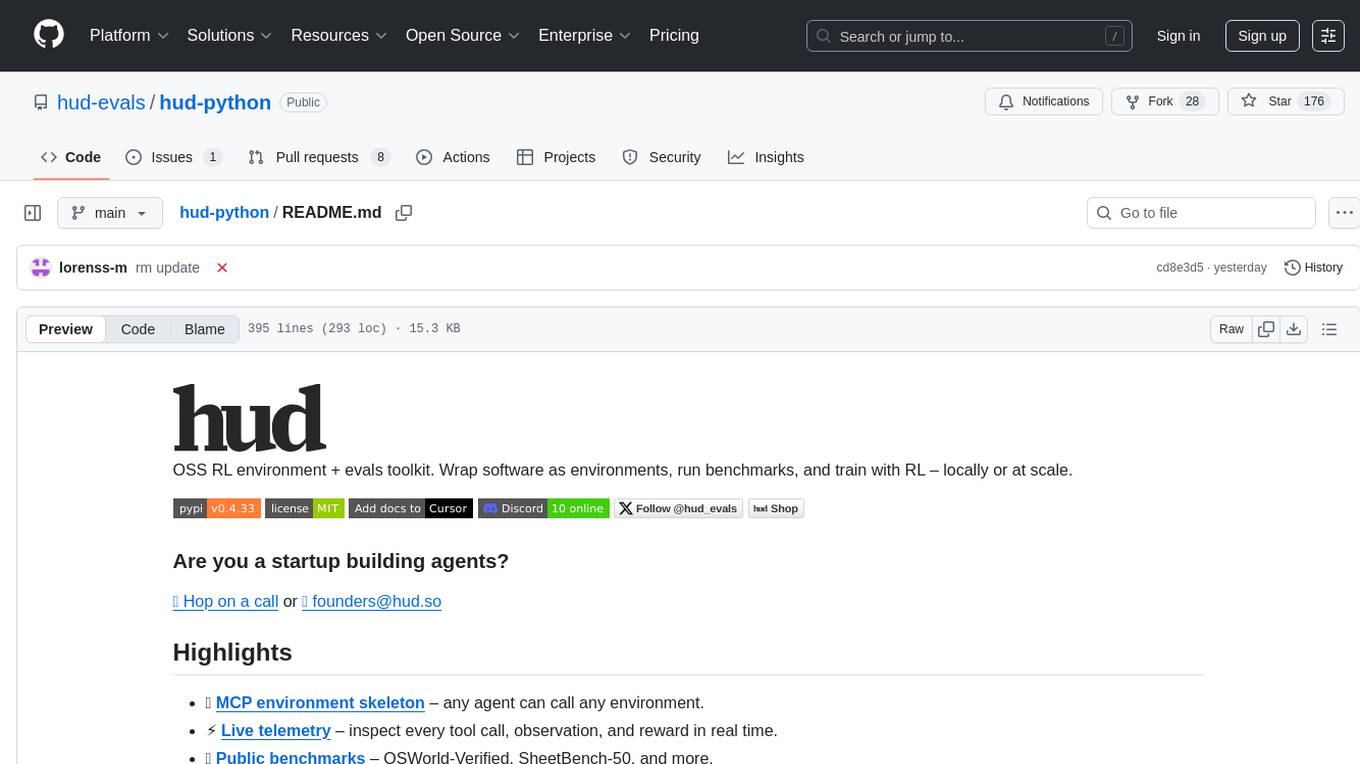
hud-python
hud-python is a Python library for creating interactive heads-up displays (HUDs) in video games. It provides a simple and flexible way to overlay information on the screen, such as player health, score, and notifications. The library is designed to be easy to use and customizable, allowing game developers to enhance the user experience by adding dynamic elements to their games. With hud-python, developers can create engaging HUDs that improve gameplay and provide important feedback to players.
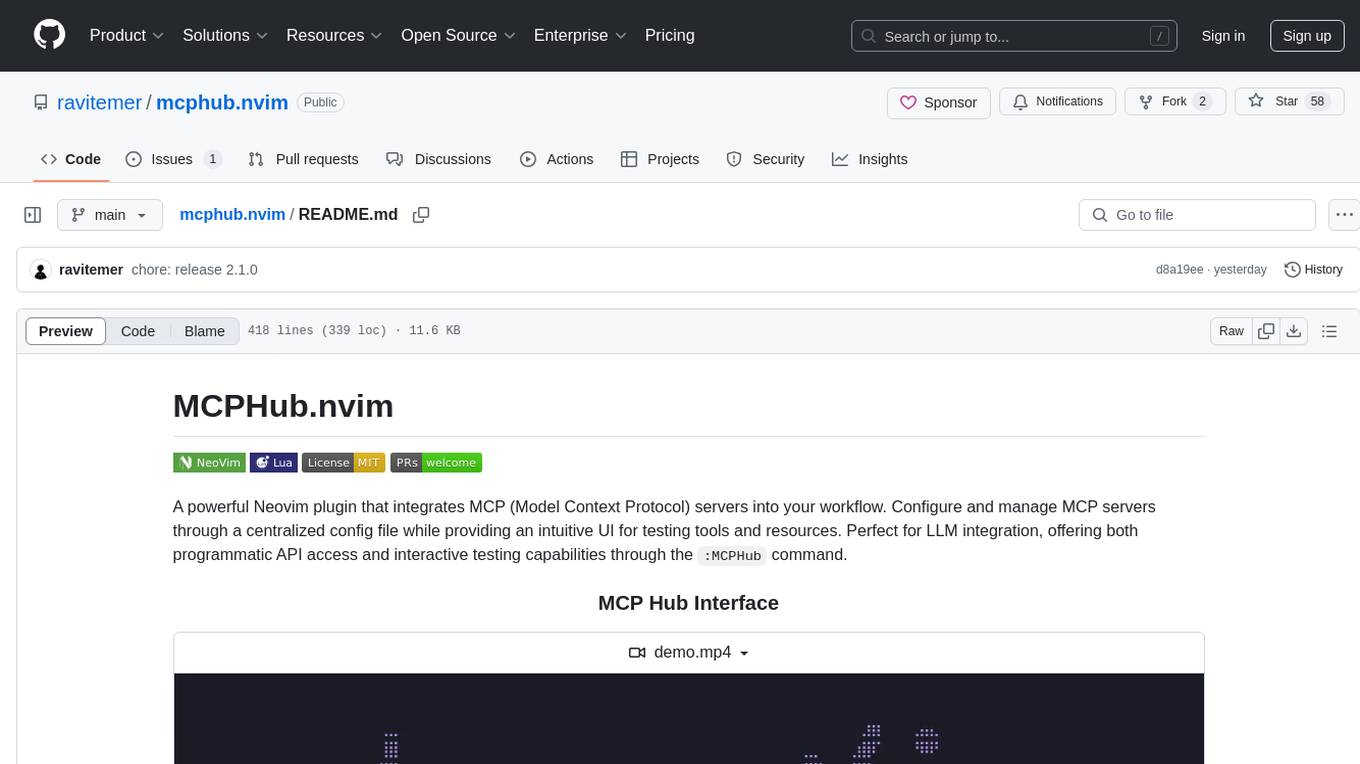
mcphub.nvim
MCPHub.nvim is a powerful Neovim plugin that integrates MCP (Model Context Protocol) servers into your workflow. It offers a centralized config file for managing servers and tools, with an intuitive UI for testing resources. Ideal for LLM integration, it provides programmatic API access and interactive testing through the `:MCPHub` command.
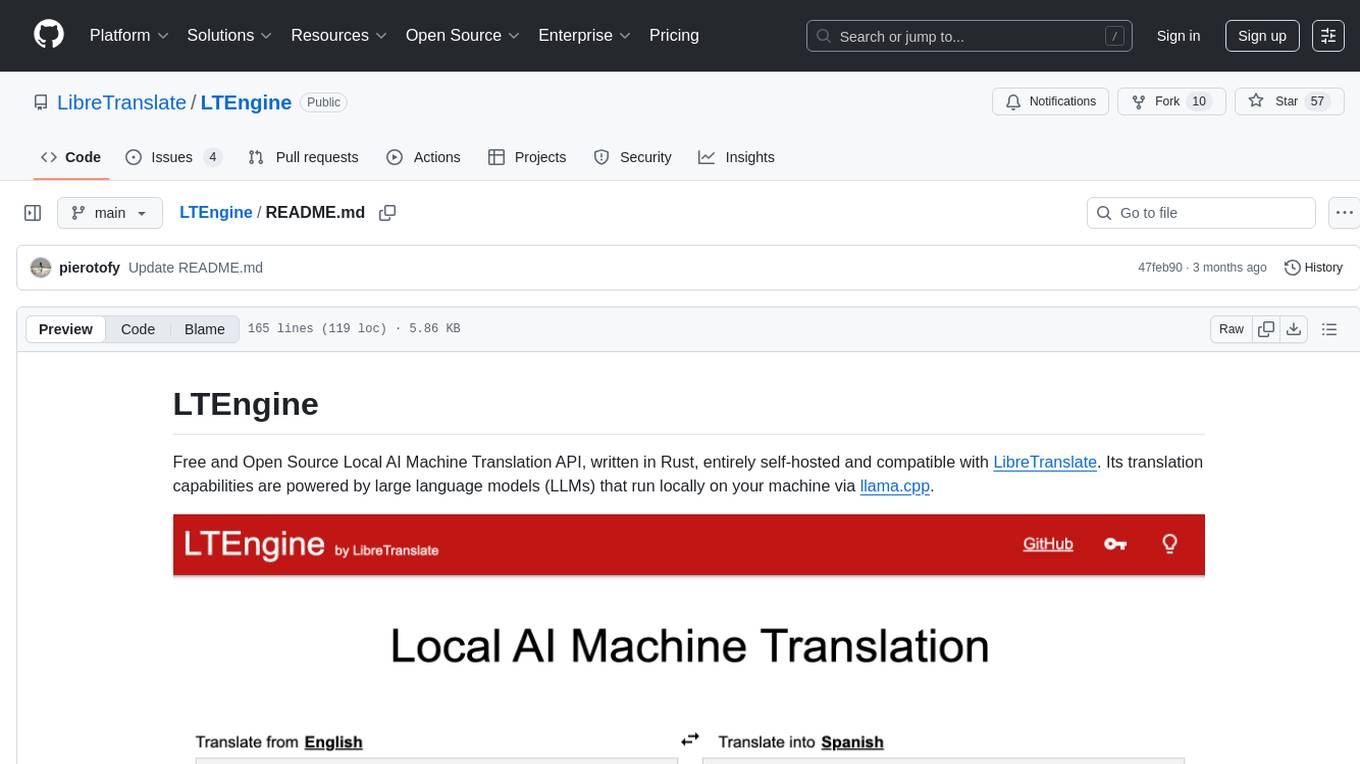
LTEngine
LTEngine is a free and open-source local AI machine translation API written in Rust. It is self-hosted and compatible with LibreTranslate. LTEngine utilizes large language models (LLMs) via llama.cpp, offering high-quality translations that rival or surpass DeepL for certain languages. It supports various accelerators like CUDA, Metal, and Vulkan, with the largest model 'gemma3-27b' fitting on a single consumer RTX 3090. LTEngine is actively developed, with a roadmap outlining future enhancements and features.
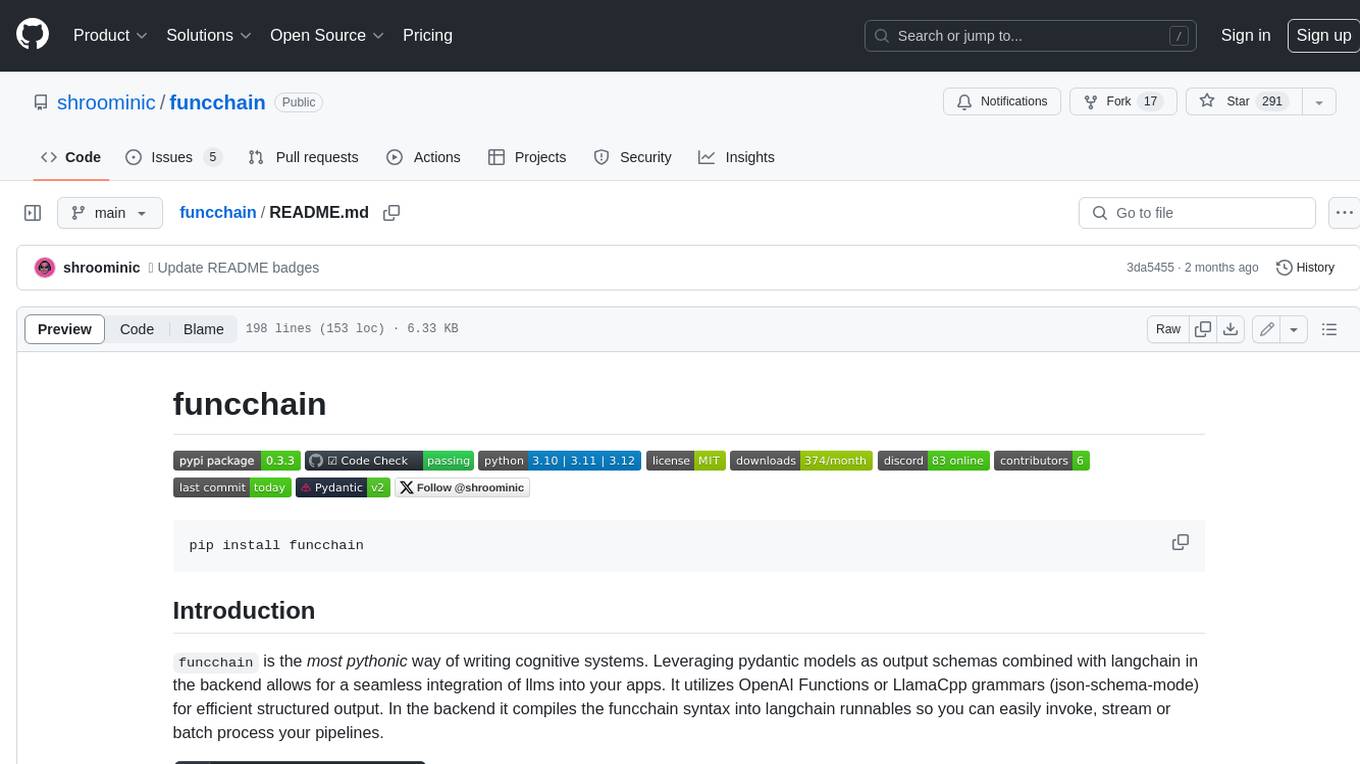
funcchain
Funcchain is a Python library that allows you to easily write cognitive systems by leveraging Pydantic models as output schemas and LangChain in the backend. It provides a seamless integration of LLMs into your apps, utilizing OpenAI Functions or LlamaCpp grammars (json-schema-mode) for efficient structured output. Funcchain compiles the Funcchain syntax into LangChain runnables, enabling you to invoke, stream, or batch process your pipelines effortlessly.
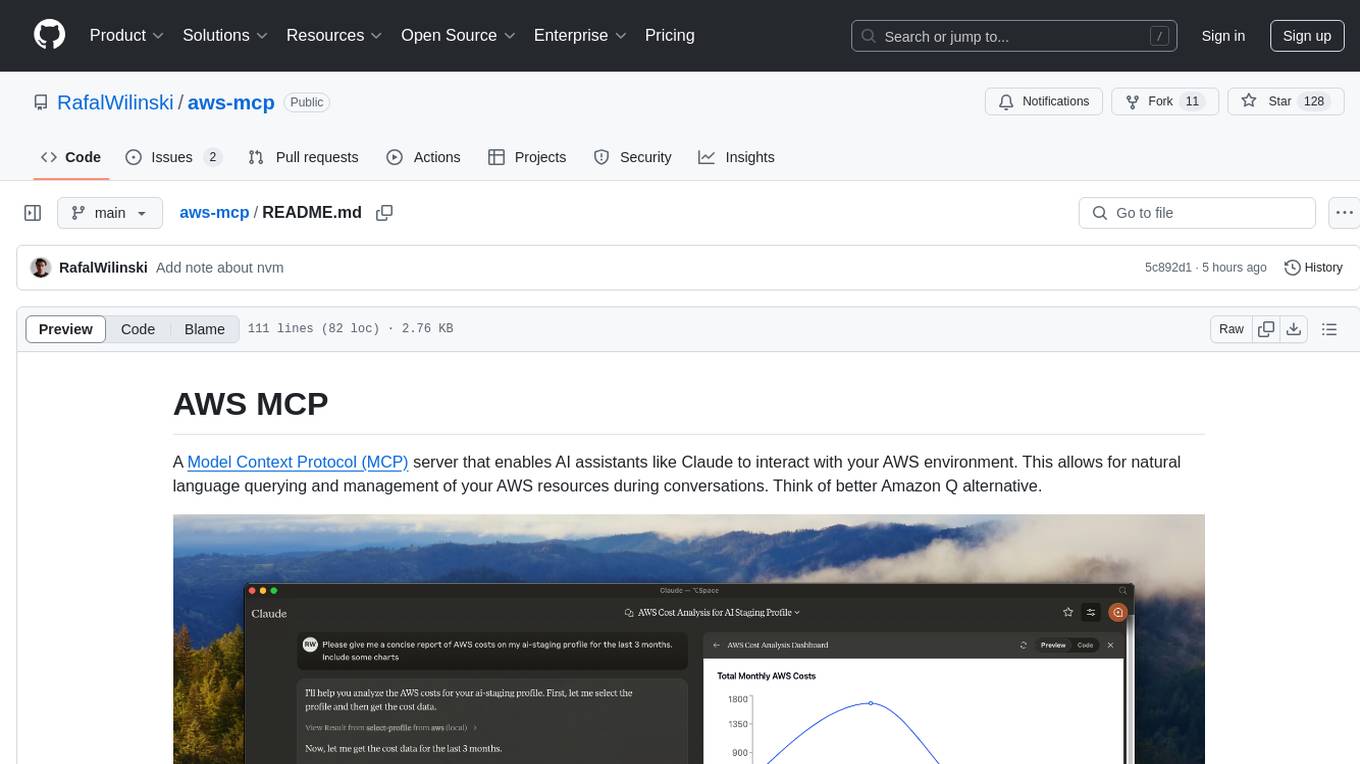
aws-mcp
AWS MCP is a Model Context Protocol (MCP) server that facilitates interactions between AI assistants and AWS environments. It allows for natural language querying and management of AWS resources during conversations. The server supports multiple AWS profiles, SSO authentication, multi-region operations, and secure credential handling. Users can locally execute commands with their AWS credentials, enhancing the conversational experience with AWS resources.
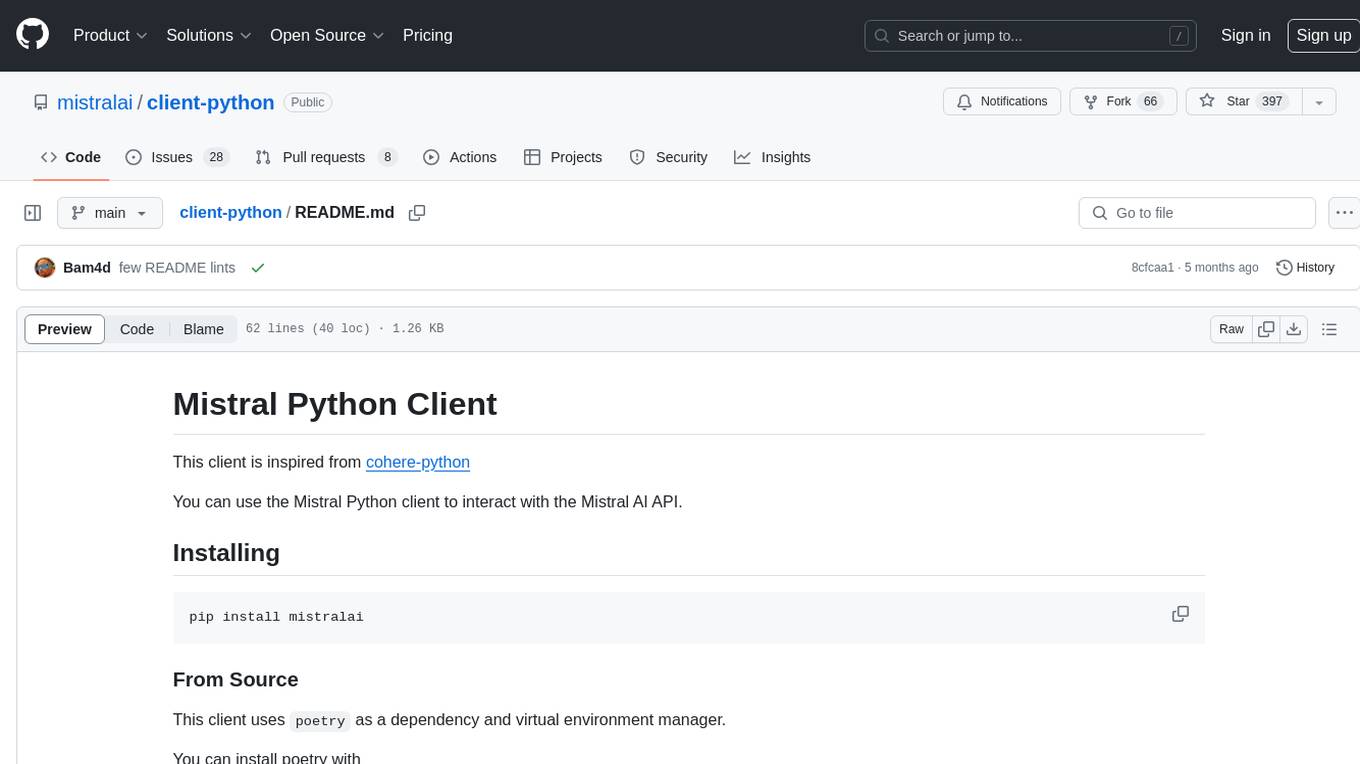
client-python
The Mistral Python Client is a tool inspired by cohere-python that allows users to interact with the Mistral AI API. It provides functionalities to access and utilize the AI capabilities offered by Mistral. Users can easily install the client using pip and manage dependencies using poetry. The client includes examples demonstrating how to use the API for various tasks, such as chat interactions. To get started, users need to obtain a Mistral API Key and set it as an environment variable. Overall, the Mistral Python Client simplifies the integration of Mistral AI services into Python applications.
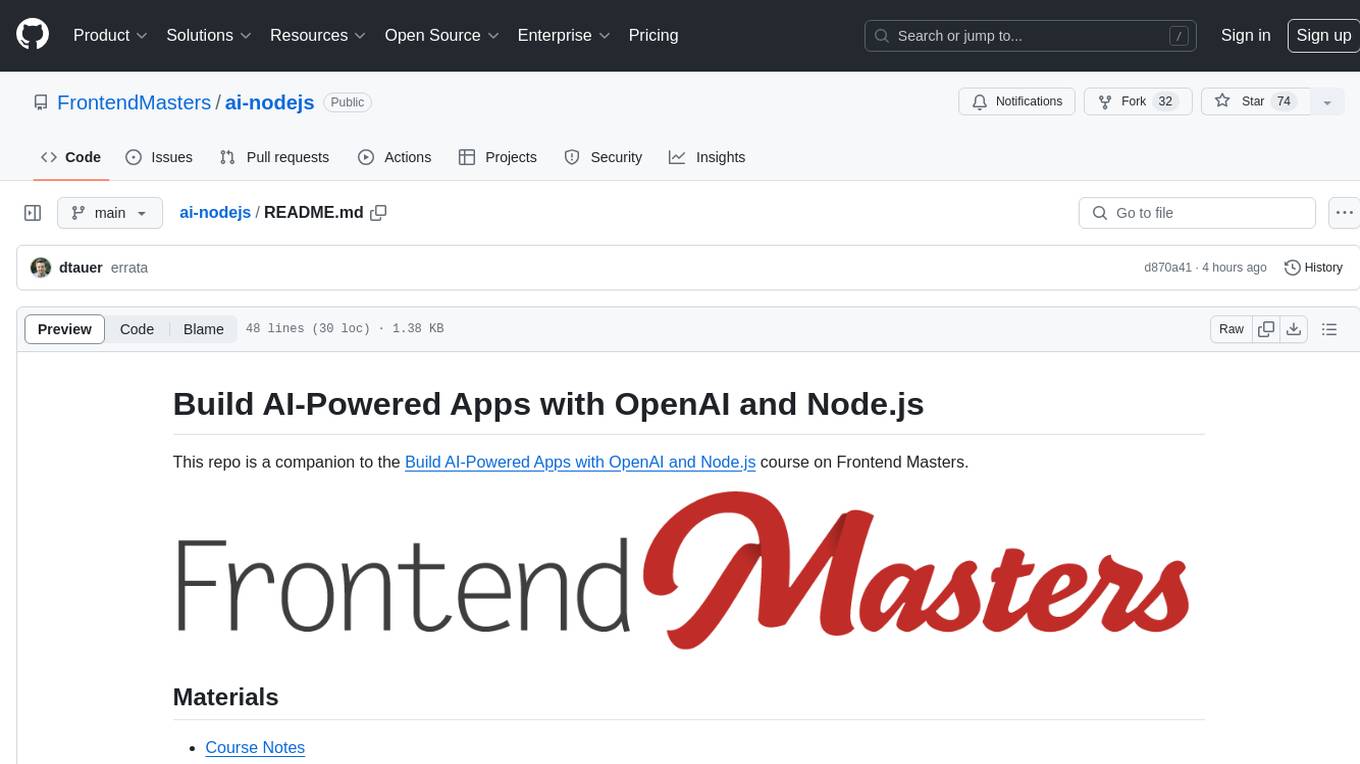
ai-nodejs
This repository serves as a companion to the Build AI-Powered Apps with OpenAI and Node.js course on Frontend Masters. It includes course notes and provides alternative approaches for deprecated Langchain methods by installing the Langchain community module and importing loaders for document processing from PDFs and YouTube videos.
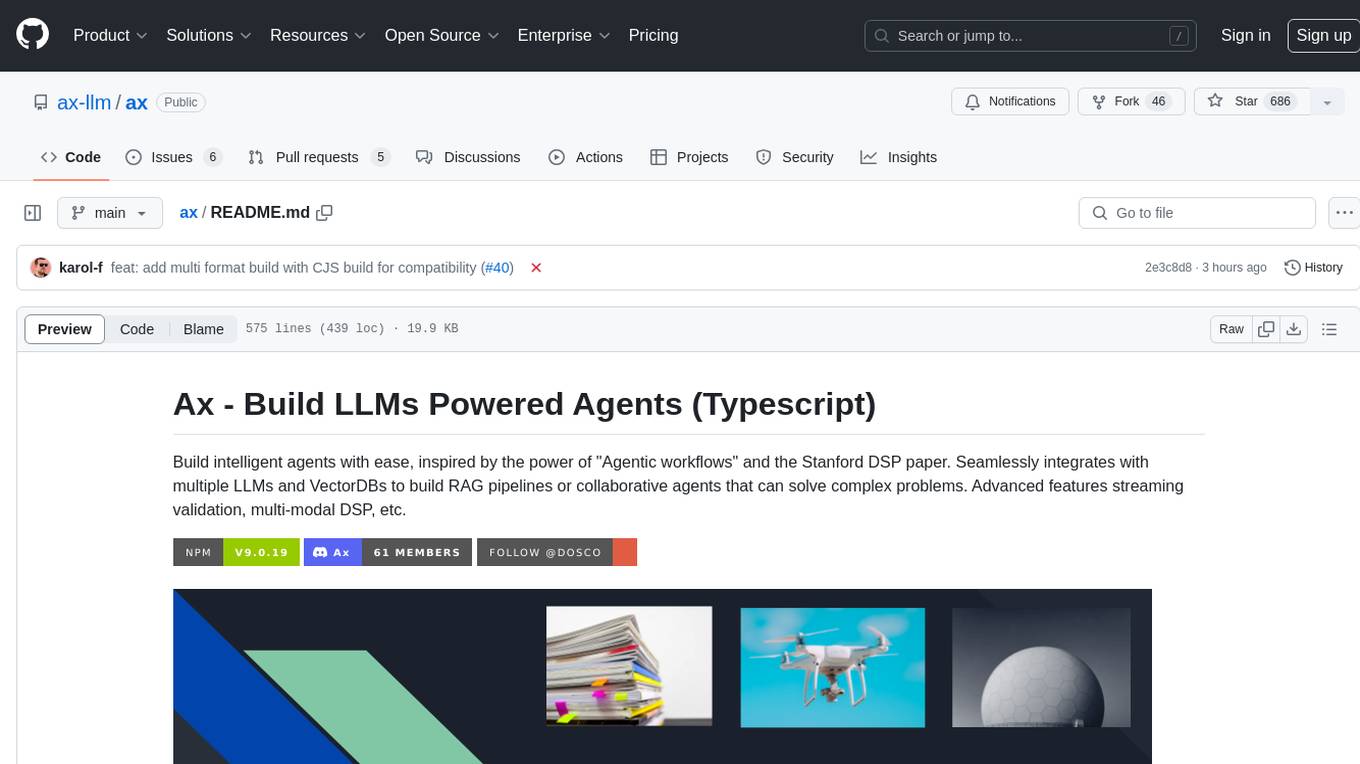
ax
Ax is a Typescript library that allows users to build intelligent agents inspired by agentic workflows and the Stanford DSP paper. It seamlessly integrates with multiple Large Language Models (LLMs) and VectorDBs to create RAG pipelines or collaborative agents capable of solving complex problems. The library offers advanced features such as streaming validation, multi-modal DSP, and automatic prompt tuning using optimizers. Users can easily convert documents of any format to text, perform smart chunking, embedding, and querying, and ensure output validation while streaming. Ax is production-ready, written in Typescript, and has zero dependencies.
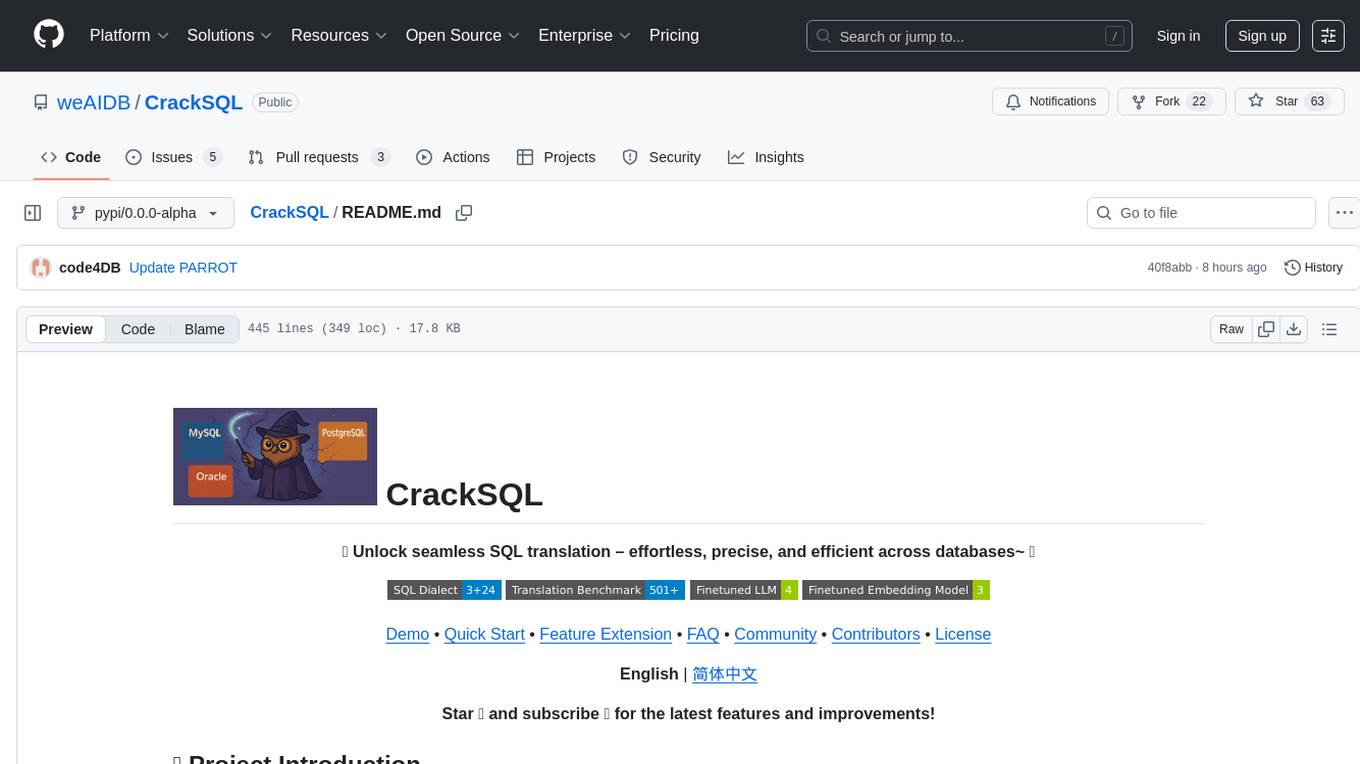
CrackSQL
CrackSQL is a powerful SQL dialect translation tool that integrates rule-based strategies with large language models (LLMs) for high accuracy. It enables seamless conversion between dialects (e.g., PostgreSQL → MySQL) with flexible access through Python API, command line, and web interface. The tool supports extensive dialect compatibility, precision & advanced processing, and versatile access & integration. It offers three modes for dialect translation and demonstrates high translation accuracy over collected benchmarks. Users can deploy CrackSQL using PyPI package installation or source code installation methods. The tool can be extended to support additional syntax, new dialects, and improve translation efficiency. The project is actively maintained and welcomes contributions from the community.
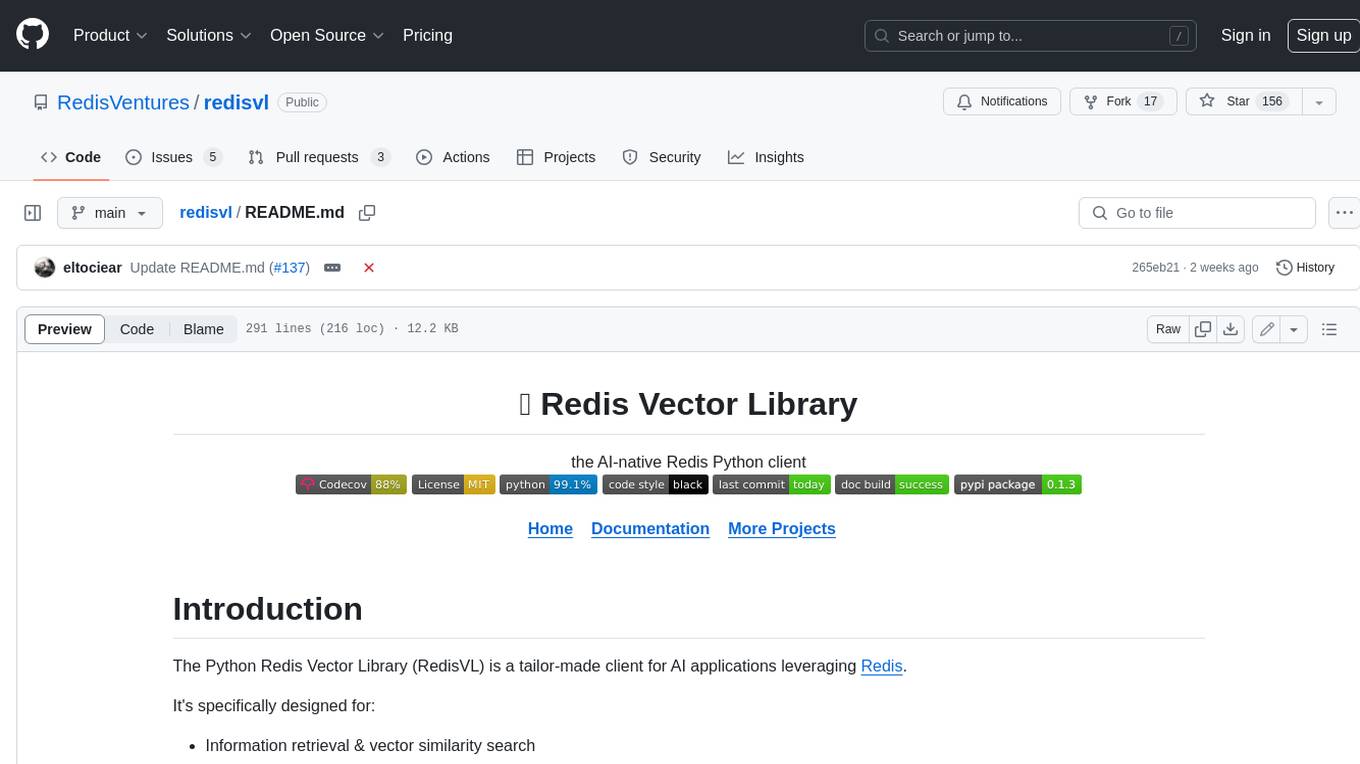
redisvl
Redis Vector Library (RedisVL) is a Python client library for building AI applications on top of Redis. It provides a high-level interface for managing vector indexes, performing vector search, and integrating with popular embedding models and providers. RedisVL is designed to make it easy for developers to build and deploy AI applications that leverage the speed, flexibility, and reliability of Redis.
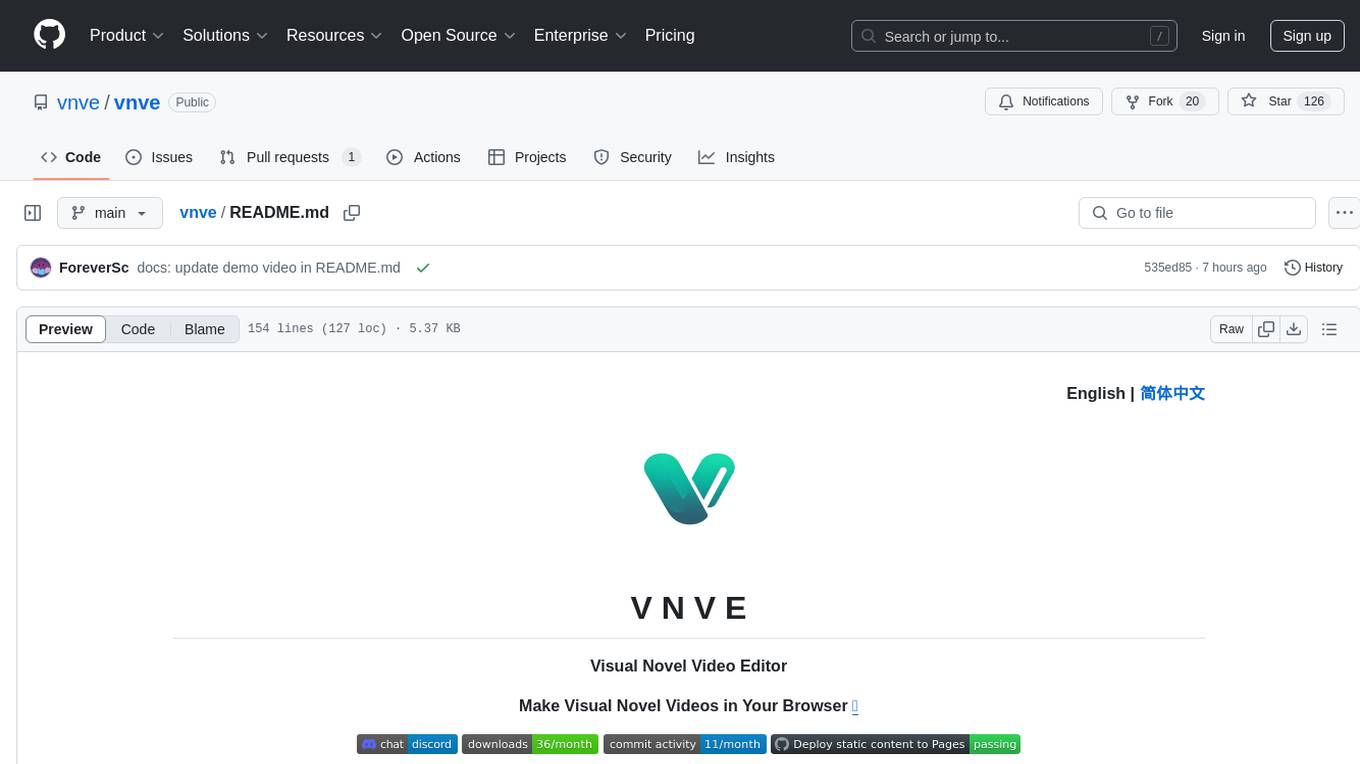
vnve
VNVE is a Visual Novel Video Editor that allows users to create visual novel videos in their browser with AI-powered rapid creation. It offers a low-cost production solution for converting textual content into videos, creating interactive videos for gaming experiences, and making video teasers for novels and short video dramas. The tool is a pure front-end Typescript implementation powered by PixiJS + WebCodecs, and users can also create videos programmatically using the npm package. VNVE is tailored specifically for visual novels, focusing on text content and simplifying the video creation process for users.
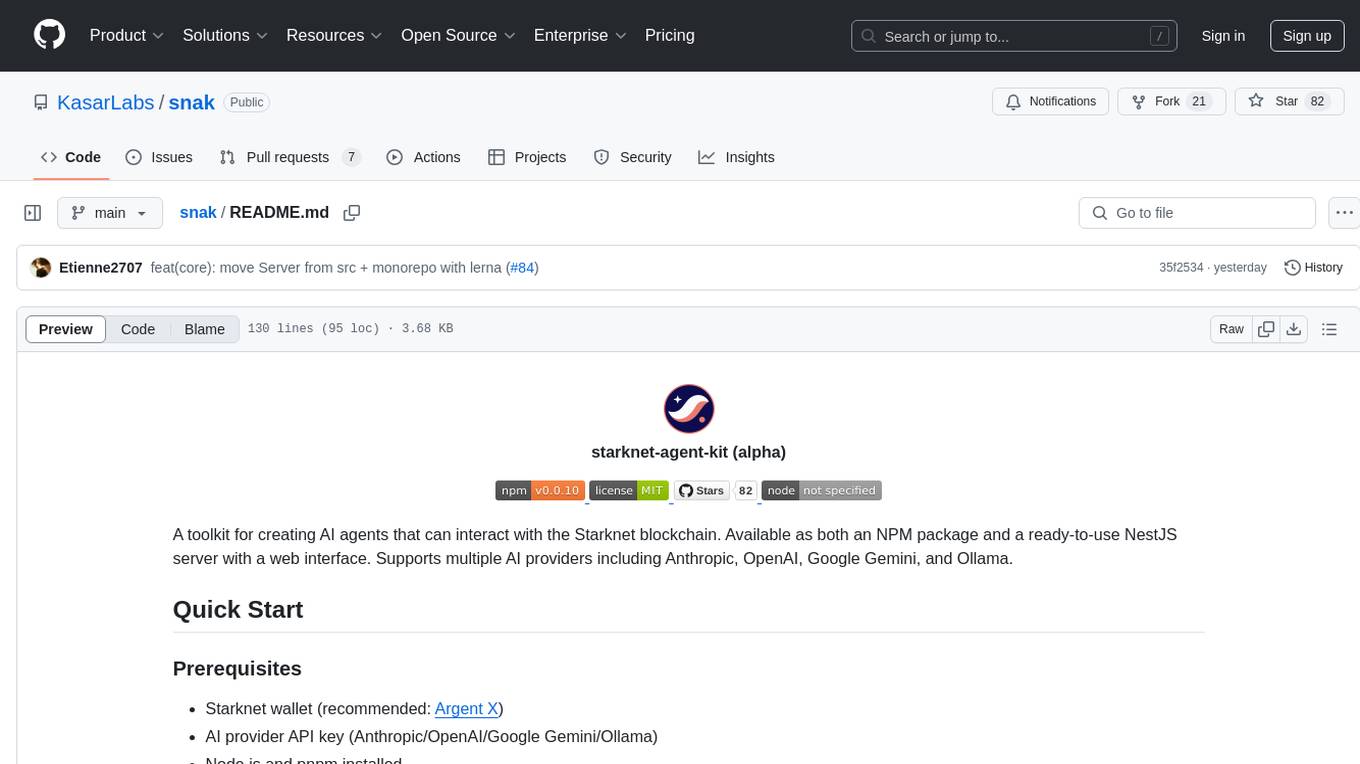
snak
The starknet-agent-kit is a toolkit designed for creating AI agents that can interact with the Starknet blockchain. It provides support for multiple AI providers such as Anthropic, OpenAI, Google Gemini, and Ollama. The kit includes an NPM package and a NestJS server with a web interface. Users can run the server in different modes like Chat Mode for conversations, checking balances, executing transfers, and managing accounts, as well as Autonomous Mode for automated monitoring. Additionally, the kit offers a library mode for more advanced usage, allowing users to interact with the StarknetAgent class for executing specific actions. The kit aims to simplify the process of integrating AI capabilities with blockchain interactions.
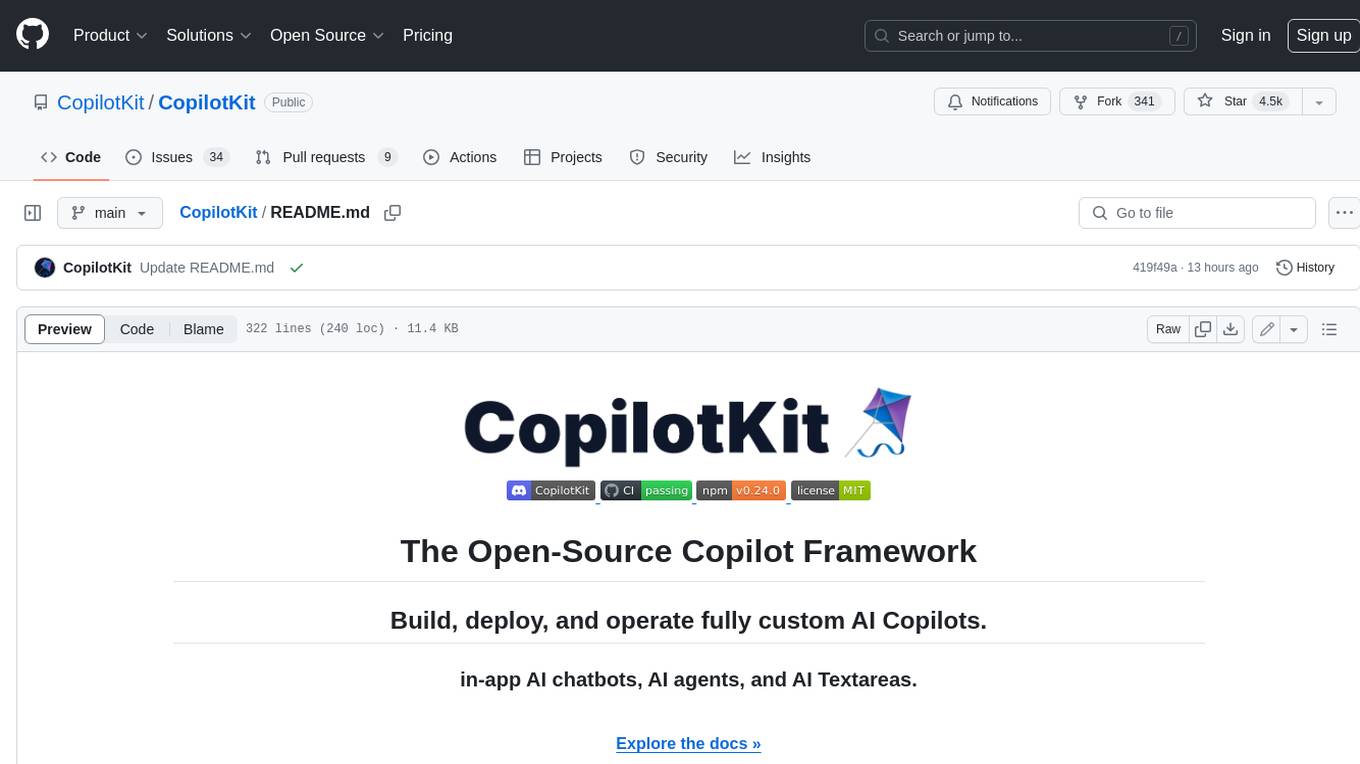
CopilotKit
CopilotKit is an open-source framework for building, deploying, and operating fully custom AI Copilots, including in-app AI chatbots, AI agents, and AI Textareas. It provides a set of components and entry points that allow developers to easily integrate AI capabilities into their applications. CopilotKit is designed to be flexible and extensible, so developers can tailor it to their specific needs. It supports a variety of use cases, including providing app-aware AI chatbots that can interact with the application state and take action, drop-in replacements for textareas with AI-assisted text generation, and in-app agents that can access real-time application context and take action within the application.
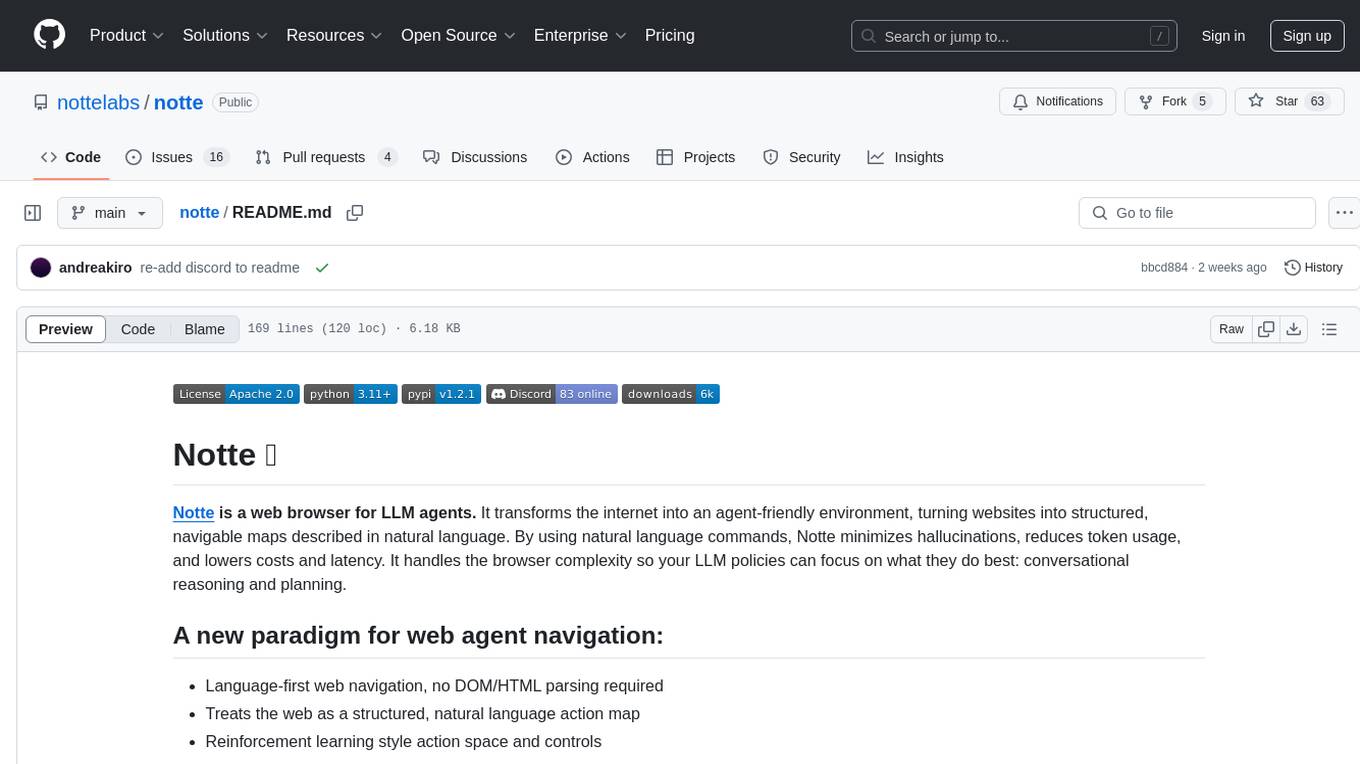
notte
Notte is a web browser designed specifically for LLM agents, providing a language-first web navigation experience without the need for DOM/HTML parsing. It transforms websites into structured, navigable maps described in natural language, enabling users to interact with the web using natural language commands. By simplifying browser complexity, Notte allows LLM policies to focus on conversational reasoning and planning, reducing token usage, costs, and latency. The tool supports various language model providers and offers a reinforcement learning style action space and controls for full navigation control.
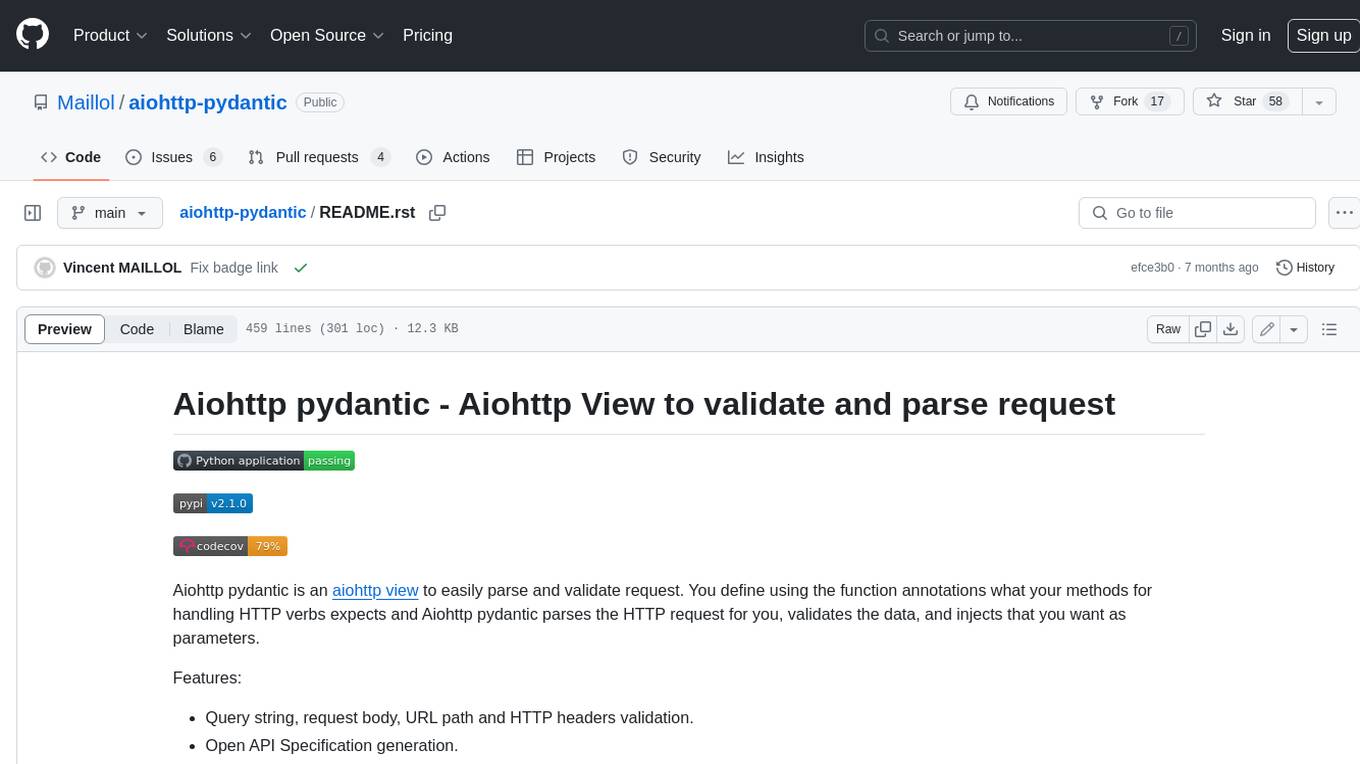
aiohttp-pydantic
Aiohttp pydantic is an aiohttp view to easily parse and validate requests. You define using function annotations what your methods for handling HTTP verbs expect, and Aiohttp pydantic parses the HTTP request for you, validates the data, and injects the parameters you want. It provides features like query string, request body, URL path, and HTTP headers validation, as well as Open API Specification generation.
For similar tasks
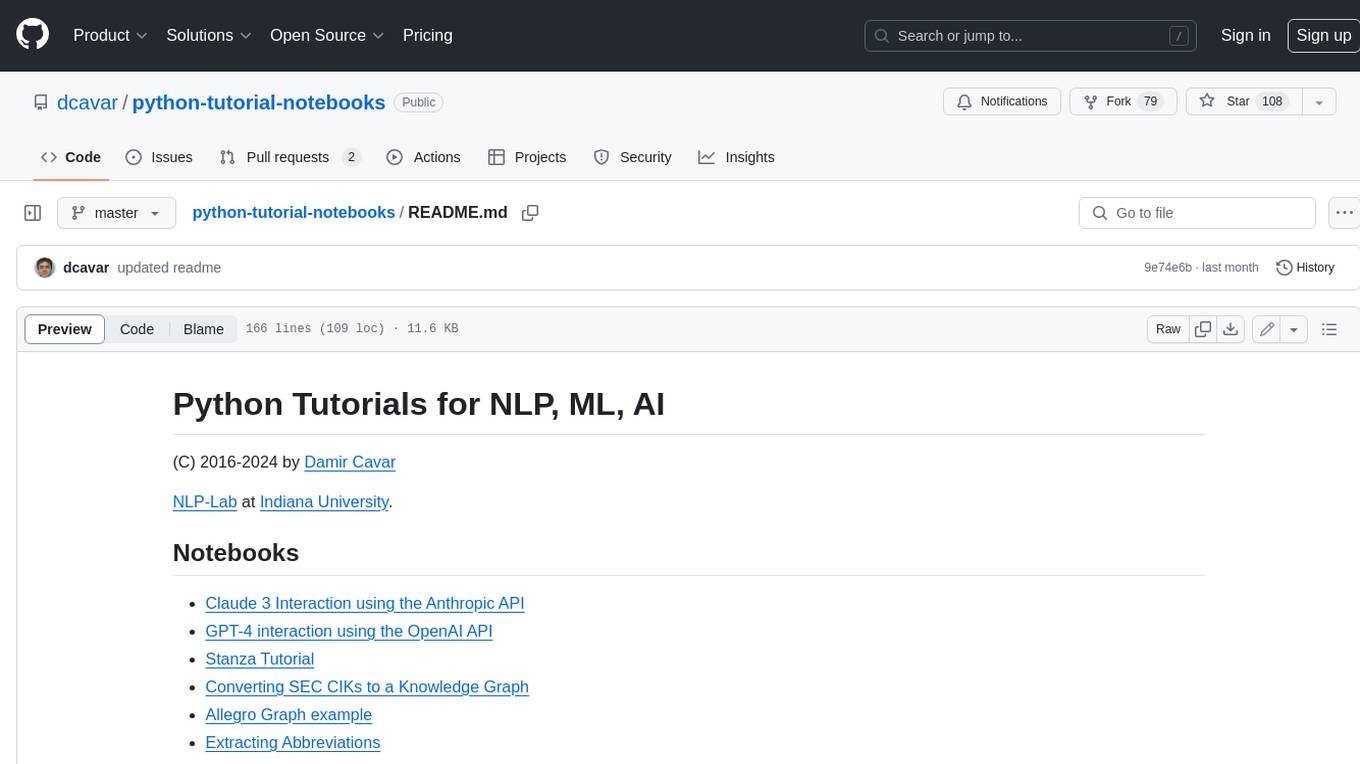
python-tutorial-notebooks
This repository contains Jupyter-based tutorials for NLP, ML, AI in Python for classes in Computational Linguistics, Natural Language Processing (NLP), Machine Learning (ML), and Artificial Intelligence (AI) at Indiana University.
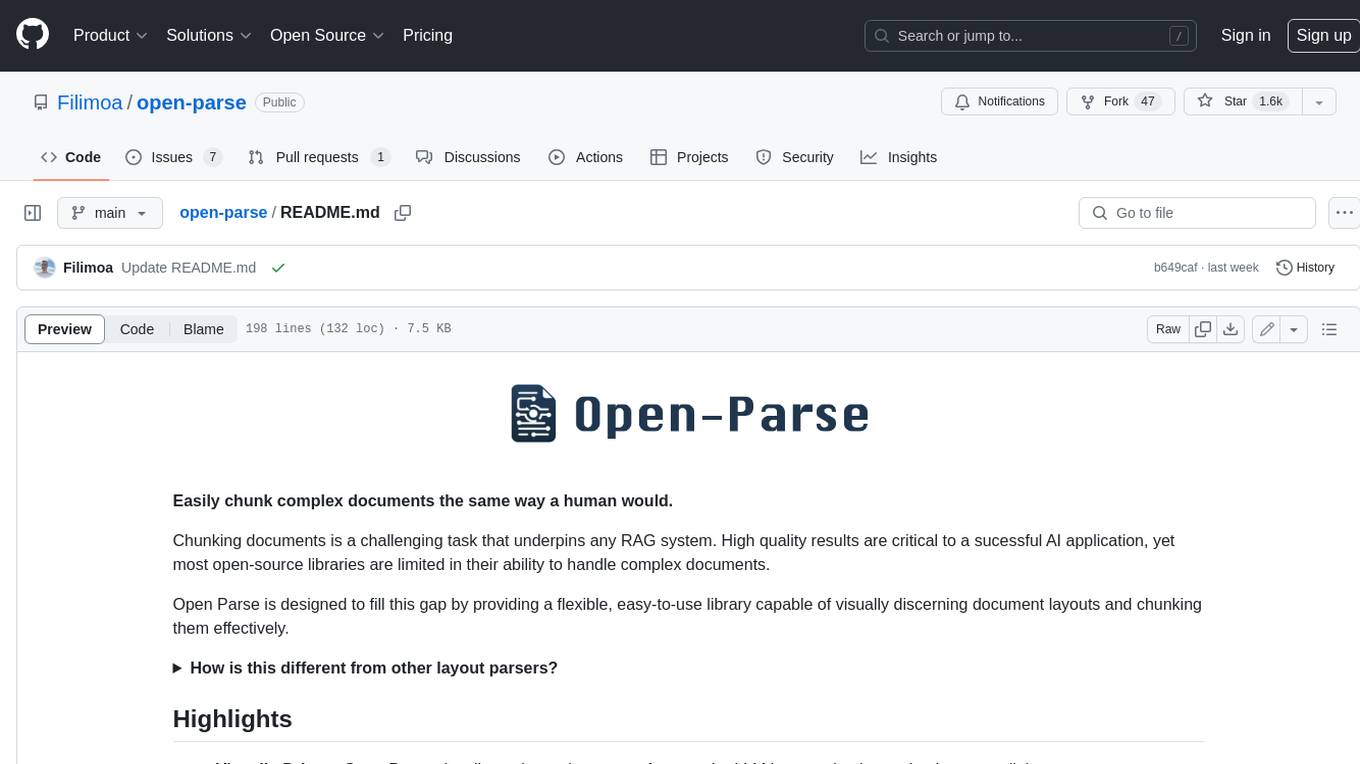
open-parse
Open Parse is a Python library for visually discerning document layouts and chunking them effectively. It is designed to fill the gap in open-source libraries for handling complex documents. Unlike text splitting, which converts a file to raw text and slices it up, Open Parse visually analyzes documents for superior LLM input. It also supports basic markdown for parsing headings, bold, and italics, and has high-precision table support, extracting tables into clean Markdown formats with accuracy that surpasses traditional tools. Open Parse is extensible, allowing users to easily implement their own post-processing steps. It is also intuitive, with great editor support and completion everywhere, making it easy to use and learn.
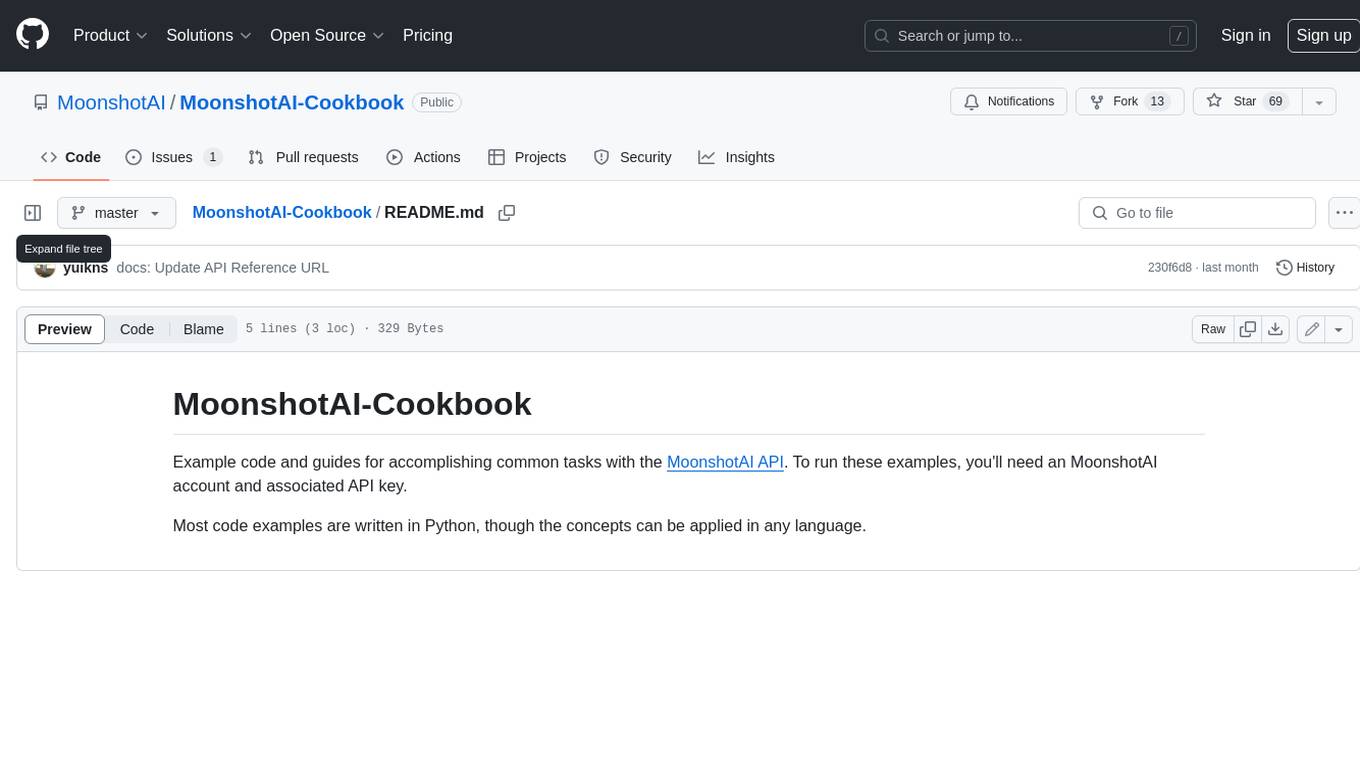
MoonshotAI-Cookbook
The MoonshotAI-Cookbook provides example code and guides for accomplishing common tasks with the MoonshotAI API. To run these examples, you'll need an MoonshotAI account and associated API key. Most code examples are written in Python, though the concepts can be applied in any language.
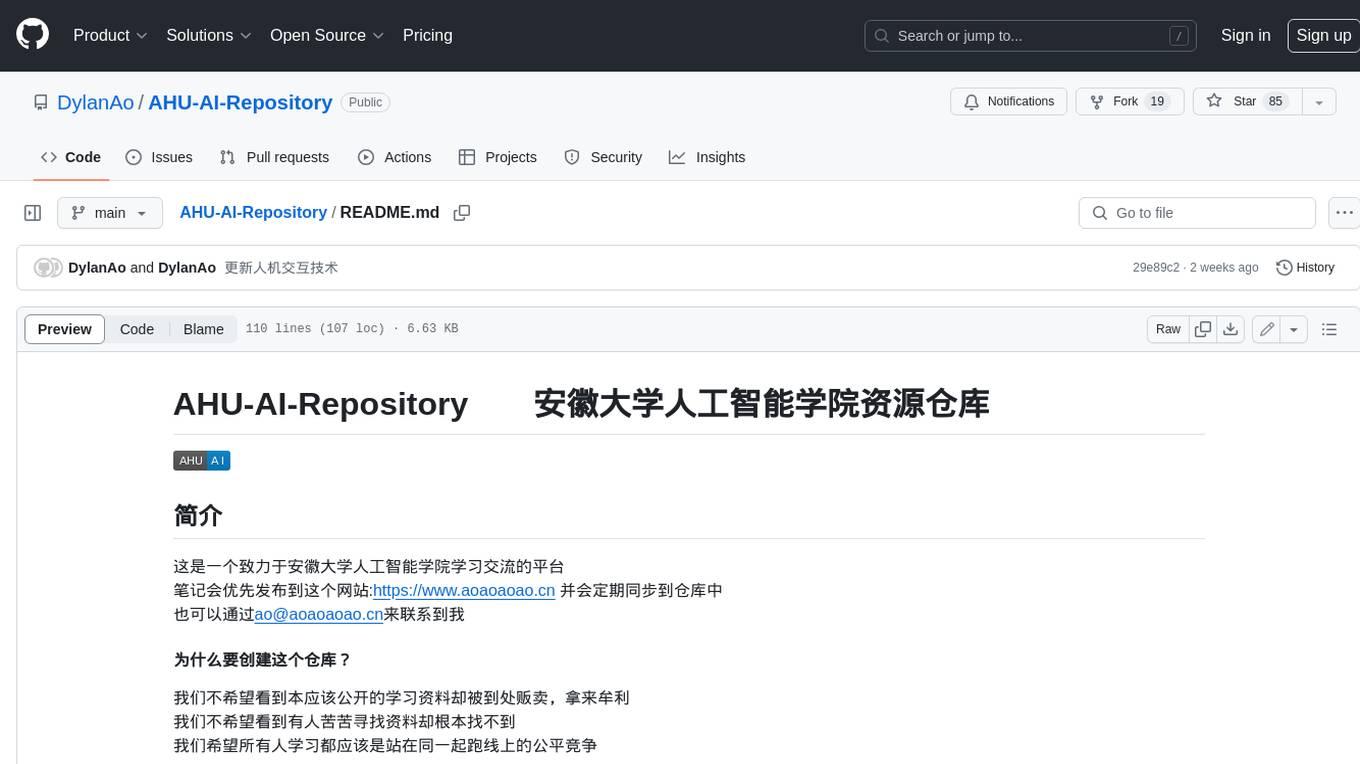
AHU-AI-Repository
This repository is dedicated to the learning and exchange of resources for the School of Artificial Intelligence at Anhui University. Notes will be published on this website first: https://www.aoaoaoao.cn and will be synchronized to the repository regularly. You can also contact me at [email protected].
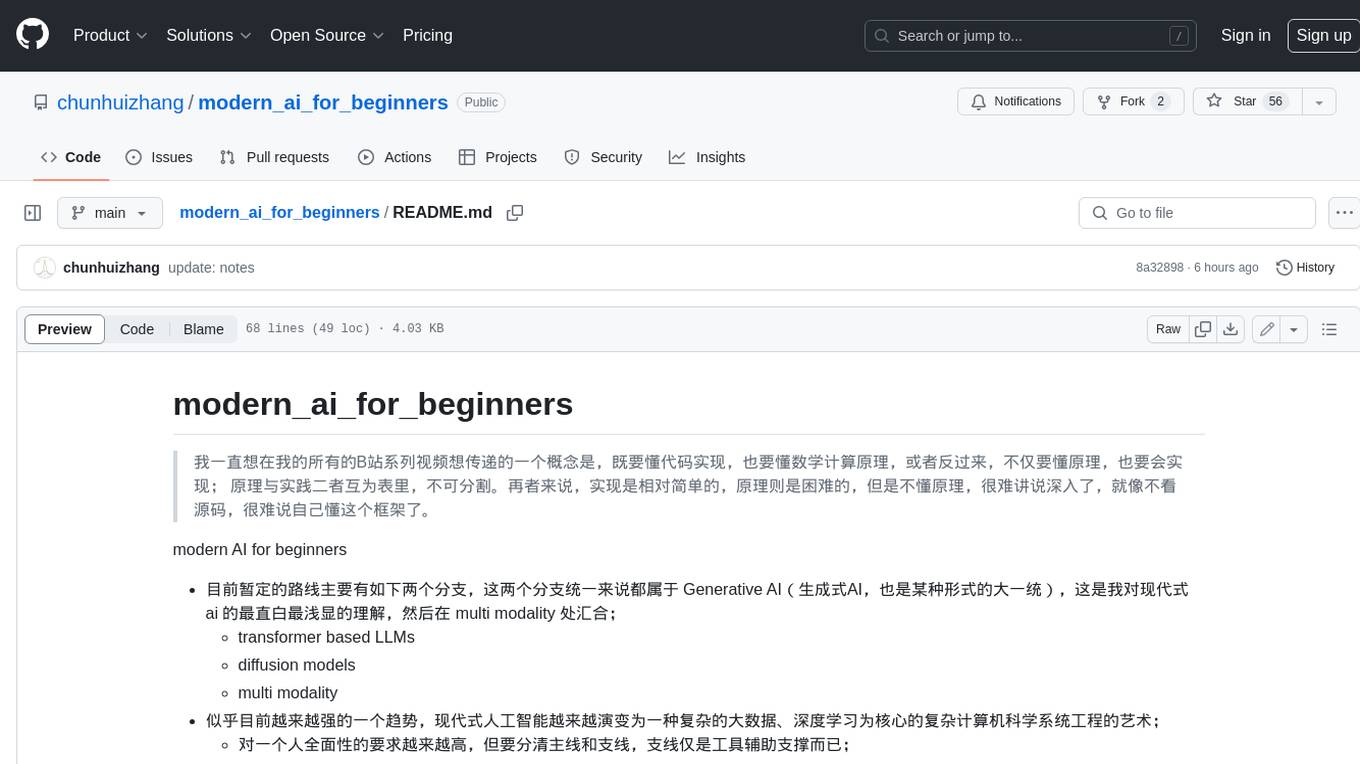
modern_ai_for_beginners
This repository provides a comprehensive guide to modern AI for beginners, covering both theoretical foundations and practical implementation. It emphasizes the importance of understanding both the mathematical principles and the code implementation of AI models. The repository includes resources on PyTorch, deep learning fundamentals, mathematical foundations, transformer-based LLMs, diffusion models, software engineering, and full-stack development. It also features tutorials on natural language processing with transformers, reinforcement learning, and practical deep learning for coders.
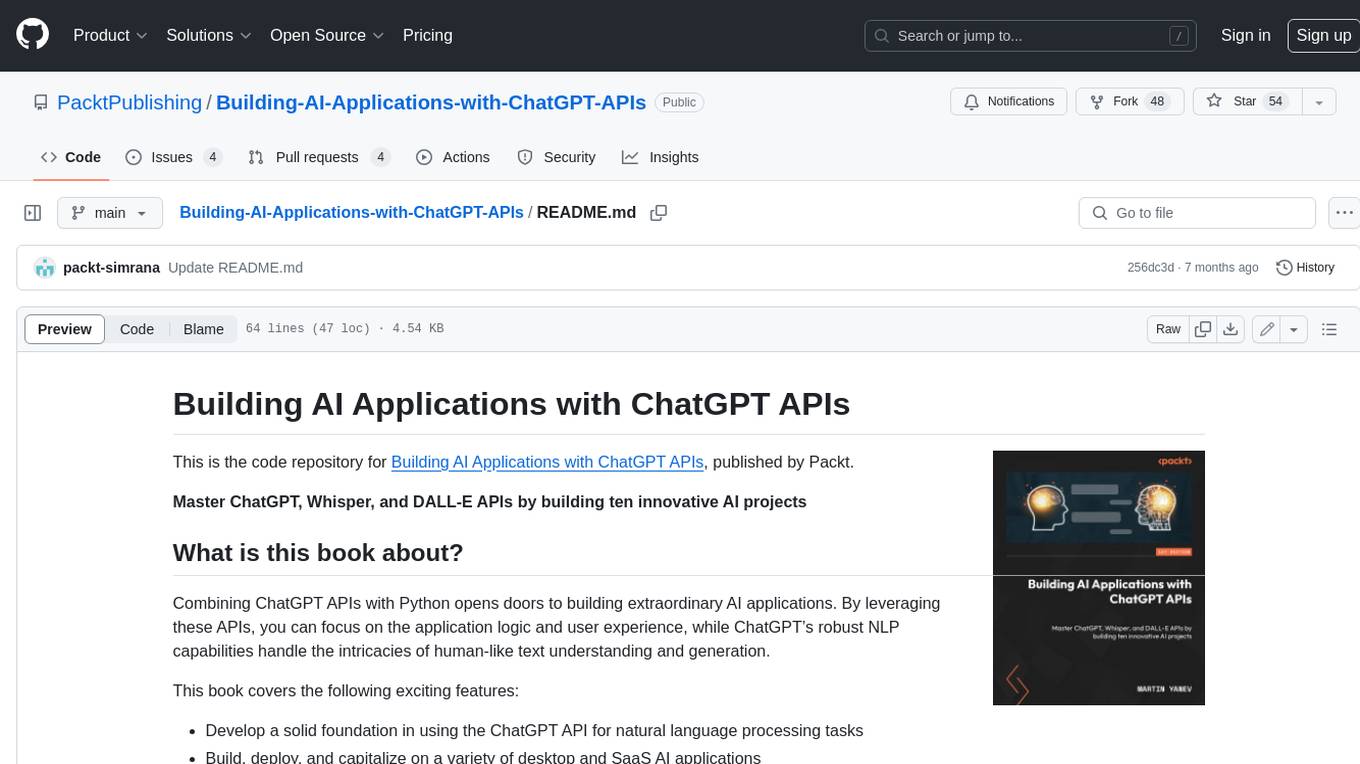
Building-AI-Applications-with-ChatGPT-APIs
This repository is for the book 'Building AI Applications with ChatGPT APIs' published by Packt. It provides code examples and instructions for mastering ChatGPT, Whisper, and DALL-E APIs through building innovative AI projects. Readers will learn to develop AI applications using ChatGPT APIs, integrate them with frameworks like Flask and Django, create AI-generated art with DALL-E APIs, and optimize ChatGPT models through fine-tuning.
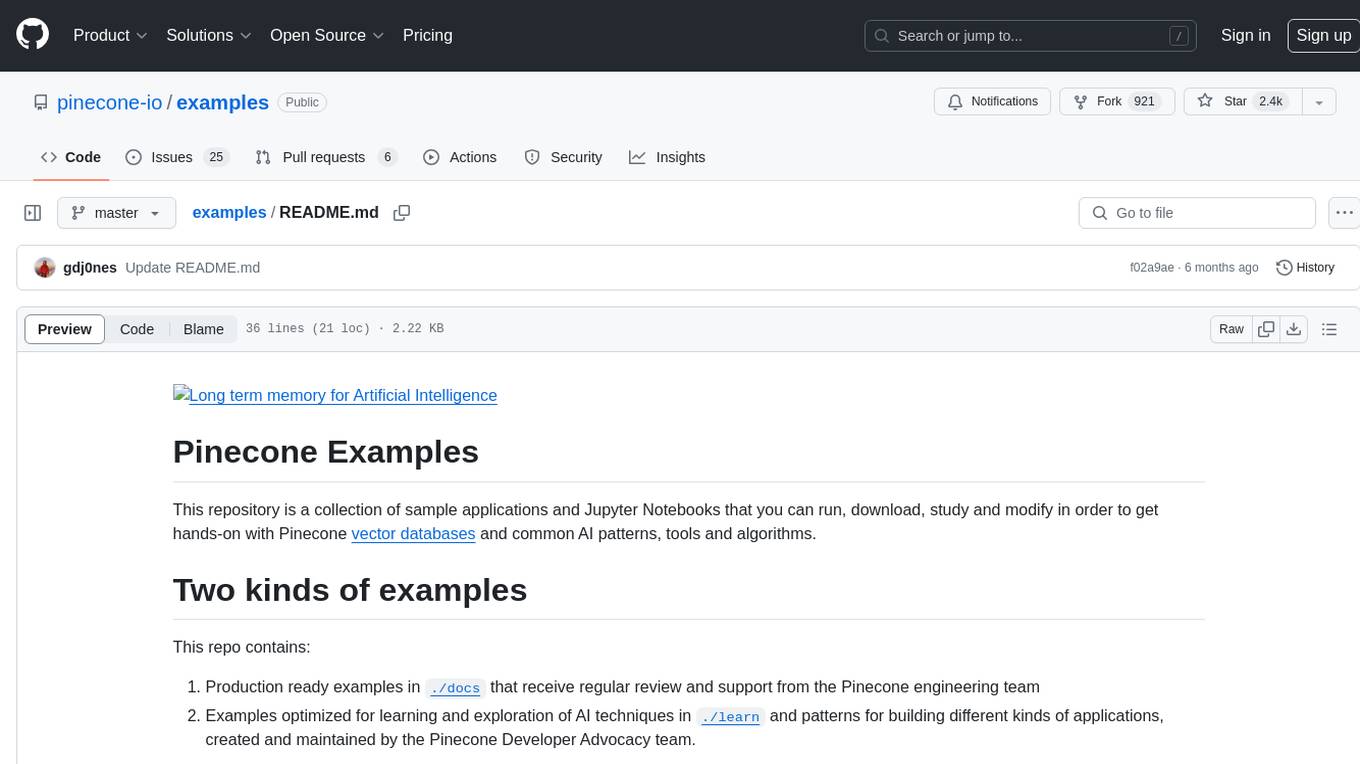
examples
This repository contains a collection of sample applications and Jupyter Notebooks for hands-on experience with Pinecone vector databases and common AI patterns, tools, and algorithms. It includes production-ready examples for review and support, as well as learning-optimized examples for exploring AI techniques and building applications. Users can contribute, provide feedback, and collaborate to improve the resource.
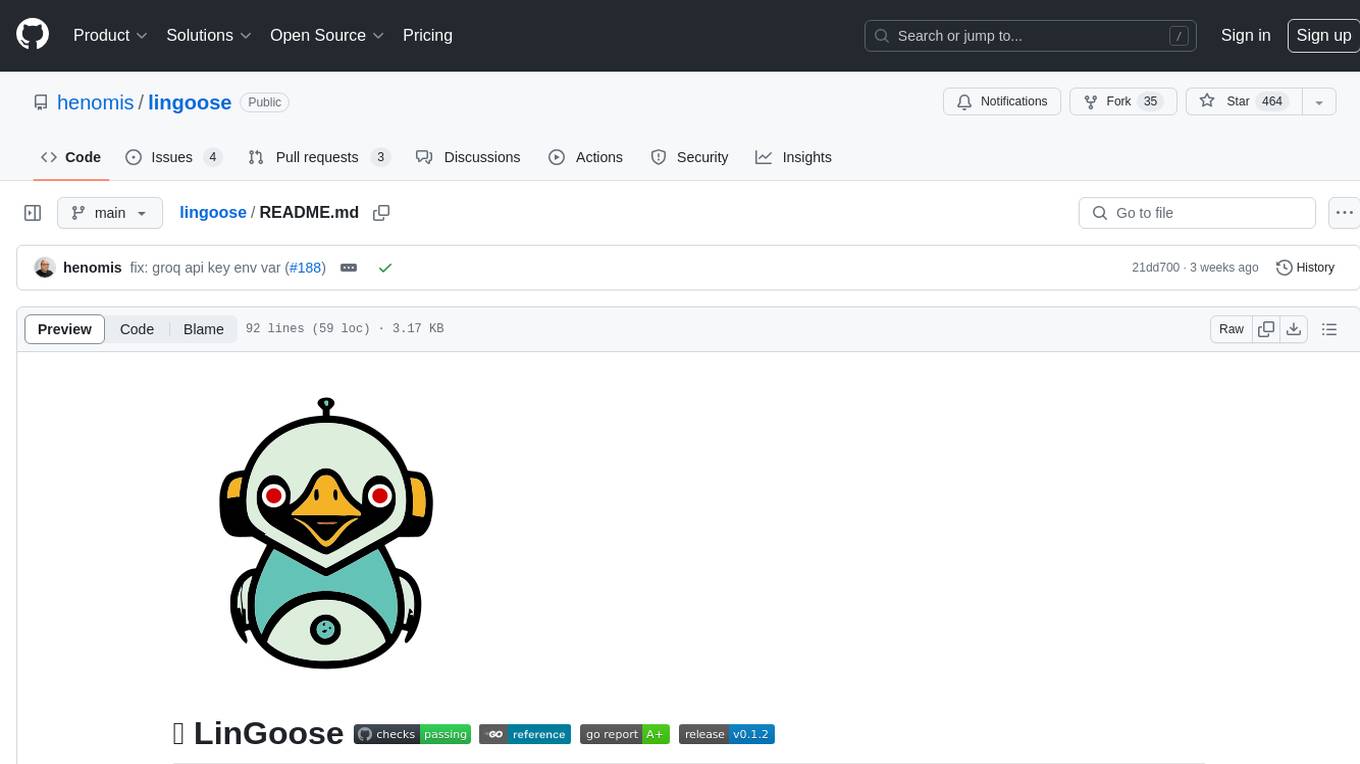
lingoose
LinGoose is a modular Go framework designed for building AI/LLM applications. It offers the flexibility to import only the necessary modules, abstracts features for customization, and provides a comprehensive solution for developing AI/LLM applications from scratch. The framework simplifies the process of creating intelligent applications by allowing users to choose preferred implementations or create their own. LinGoose empowers developers to leverage its capabilities to streamline the development of cutting-edge AI and LLM projects.
For similar jobs
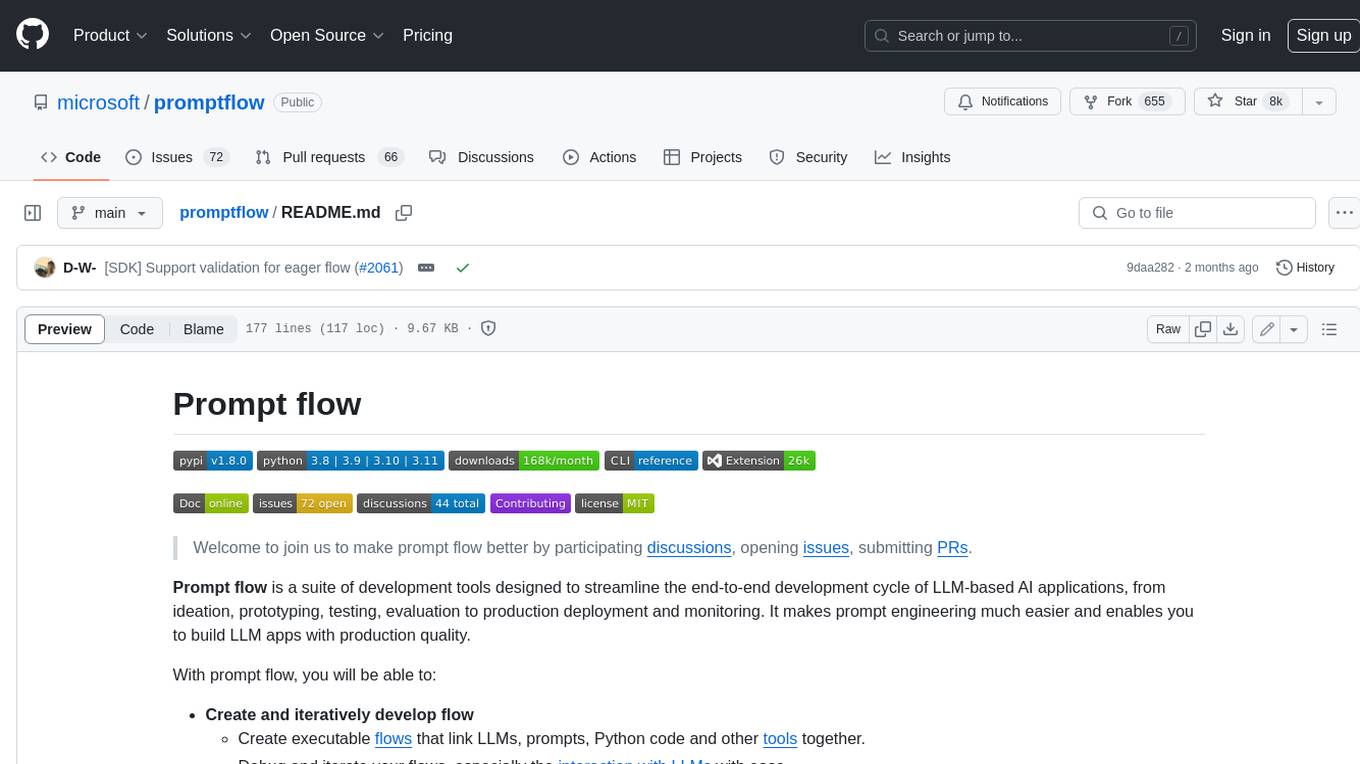
promptflow
**Prompt flow** is a suite of development tools designed to streamline the end-to-end development cycle of LLM-based AI applications, from ideation, prototyping, testing, evaluation to production deployment and monitoring. It makes prompt engineering much easier and enables you to build LLM apps with production quality.
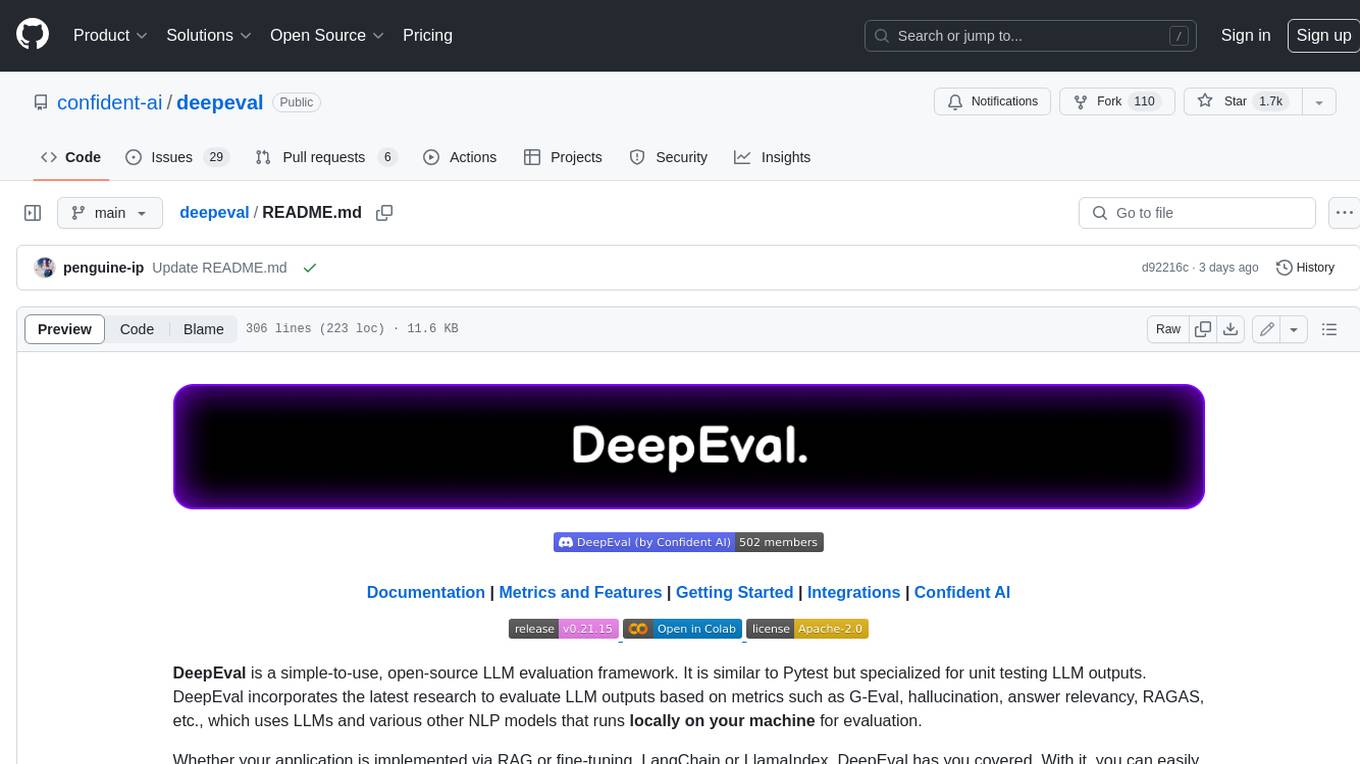
deepeval
DeepEval is a simple-to-use, open-source LLM evaluation framework specialized for unit testing LLM outputs. It incorporates various metrics such as G-Eval, hallucination, answer relevancy, RAGAS, etc., and runs locally on your machine for evaluation. It provides a wide range of ready-to-use evaluation metrics, allows for creating custom metrics, integrates with any CI/CD environment, and enables benchmarking LLMs on popular benchmarks. DeepEval is designed for evaluating RAG and fine-tuning applications, helping users optimize hyperparameters, prevent prompt drifting, and transition from OpenAI to hosting their own Llama2 with confidence.
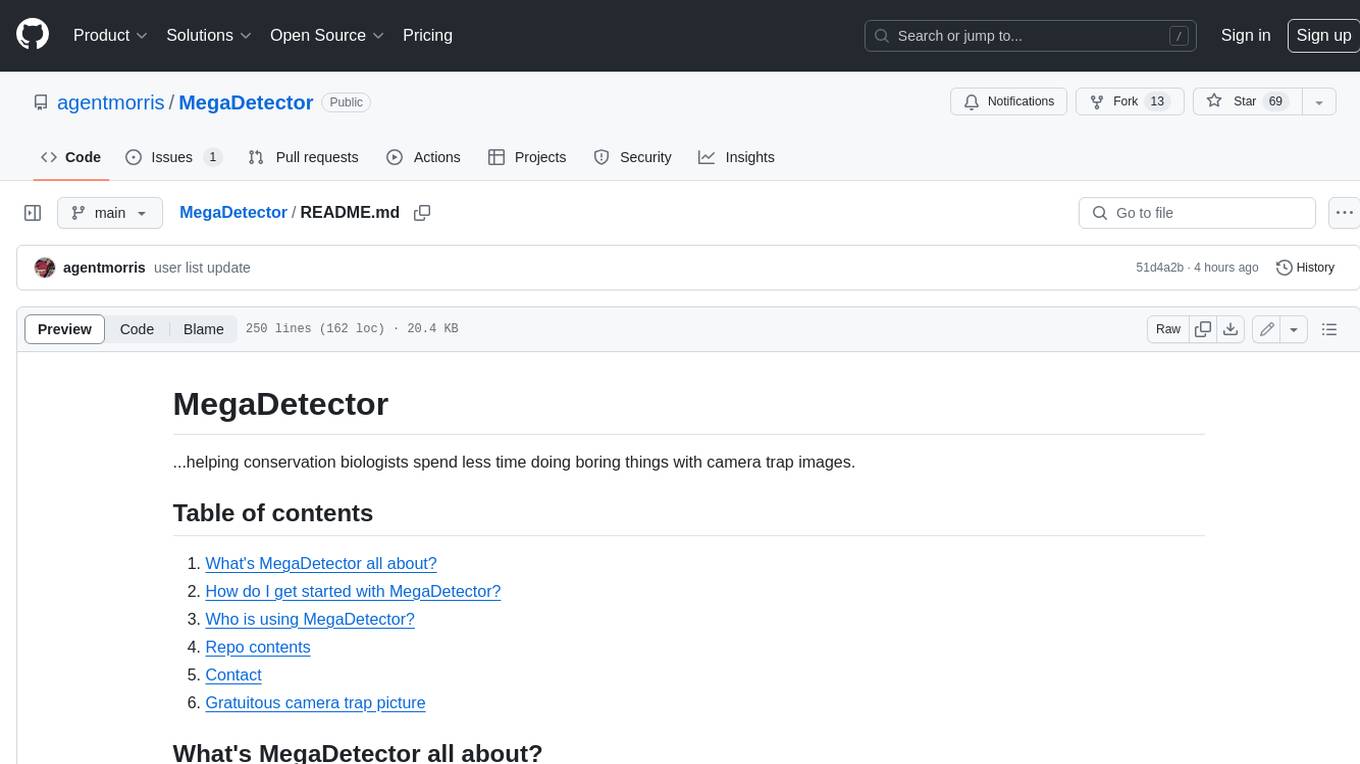
MegaDetector
MegaDetector is an AI model that identifies animals, people, and vehicles in camera trap images (which also makes it useful for eliminating blank images). This model is trained on several million images from a variety of ecosystems. MegaDetector is just one of many tools that aims to make conservation biologists more efficient with AI. If you want to learn about other ways to use AI to accelerate camera trap workflows, check out our of the field, affectionately titled "Everything I know about machine learning and camera traps".
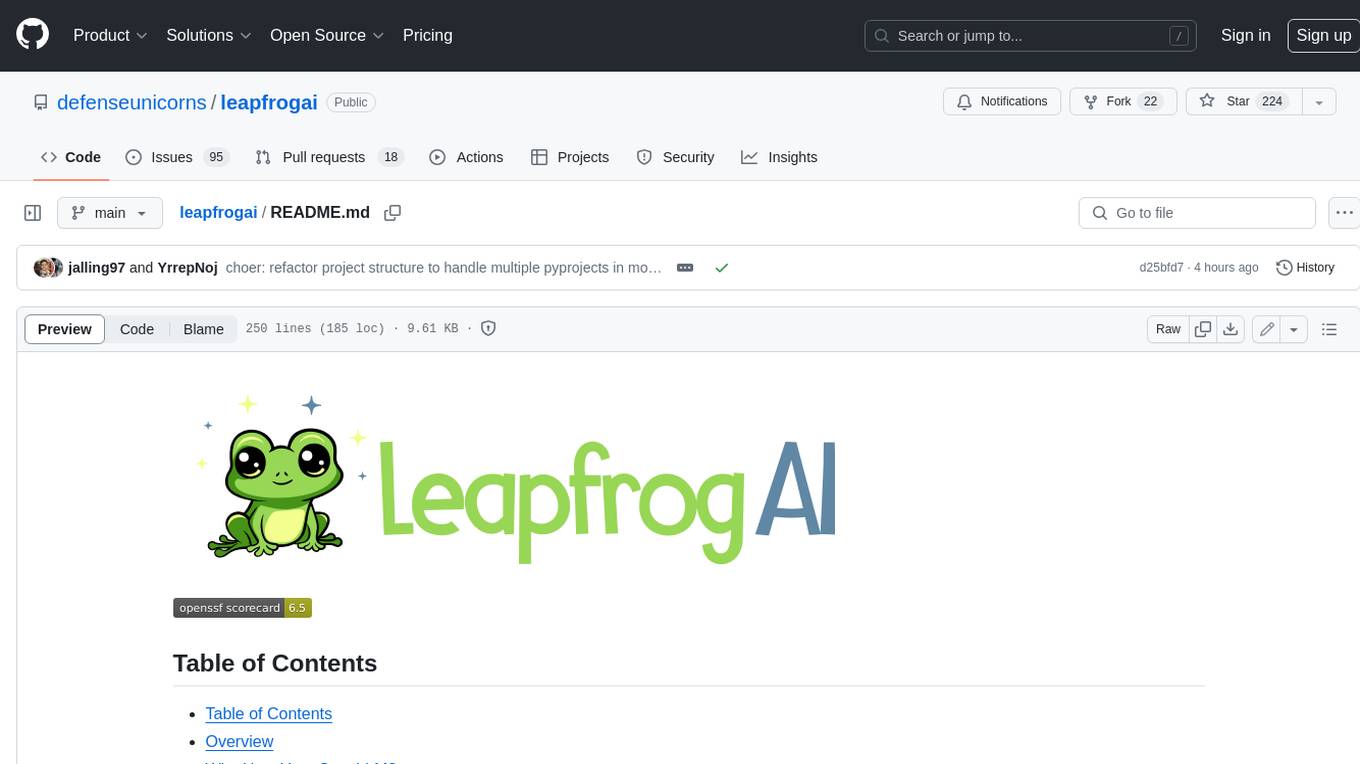
leapfrogai
LeapfrogAI is a self-hosted AI platform designed to be deployed in air-gapped resource-constrained environments. It brings sophisticated AI solutions to these environments by hosting all the necessary components of an AI stack, including vector databases, model backends, API, and UI. LeapfrogAI's API closely matches that of OpenAI, allowing tools built for OpenAI/ChatGPT to function seamlessly with a LeapfrogAI backend. It provides several backends for various use cases, including llama-cpp-python, whisper, text-embeddings, and vllm. LeapfrogAI leverages Chainguard's apko to harden base python images, ensuring the latest supported Python versions are used by the other components of the stack. The LeapfrogAI SDK provides a standard set of protobuffs and python utilities for implementing backends and gRPC. LeapfrogAI offers UI options for common use-cases like chat, summarization, and transcription. It can be deployed and run locally via UDS and Kubernetes, built out using Zarf packages. LeapfrogAI is supported by a community of users and contributors, including Defense Unicorns, Beast Code, Chainguard, Exovera, Hypergiant, Pulze, SOSi, United States Navy, United States Air Force, and United States Space Force.
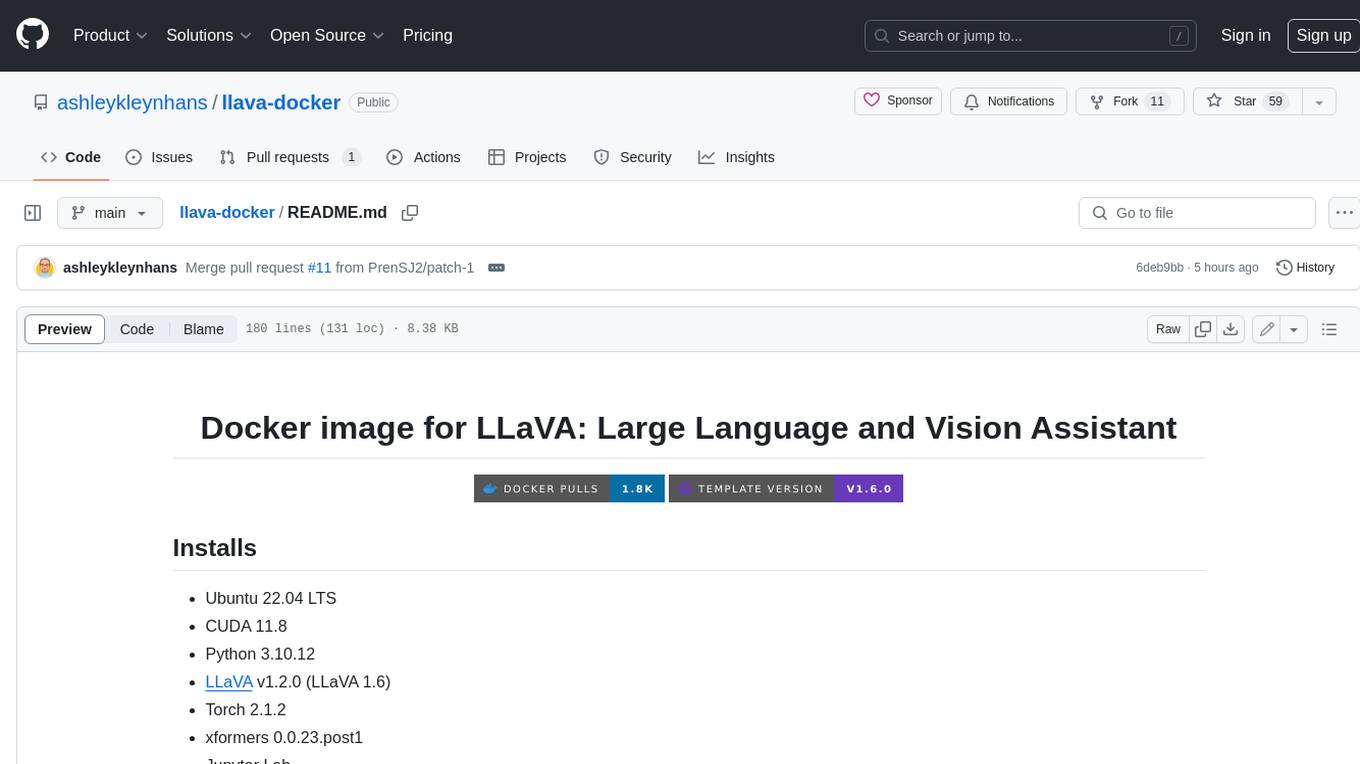
llava-docker
This Docker image for LLaVA (Large Language and Vision Assistant) provides a convenient way to run LLaVA locally or on RunPod. LLaVA is a powerful AI tool that combines natural language processing and computer vision capabilities. With this Docker image, you can easily access LLaVA's functionalities for various tasks, including image captioning, visual question answering, text summarization, and more. The image comes pre-installed with LLaVA v1.2.0, Torch 2.1.2, xformers 0.0.23.post1, and other necessary dependencies. You can customize the model used by setting the MODEL environment variable. The image also includes a Jupyter Lab environment for interactive development and exploration. Overall, this Docker image offers a comprehensive and user-friendly platform for leveraging LLaVA's capabilities.

carrot
The 'carrot' repository on GitHub provides a list of free and user-friendly ChatGPT mirror sites for easy access. The repository includes sponsored sites offering various GPT models and services. Users can find and share sites, report errors, and access stable and recommended sites for ChatGPT usage. The repository also includes a detailed list of ChatGPT sites, their features, and accessibility options, making it a valuable resource for ChatGPT users seeking free and unlimited GPT services.
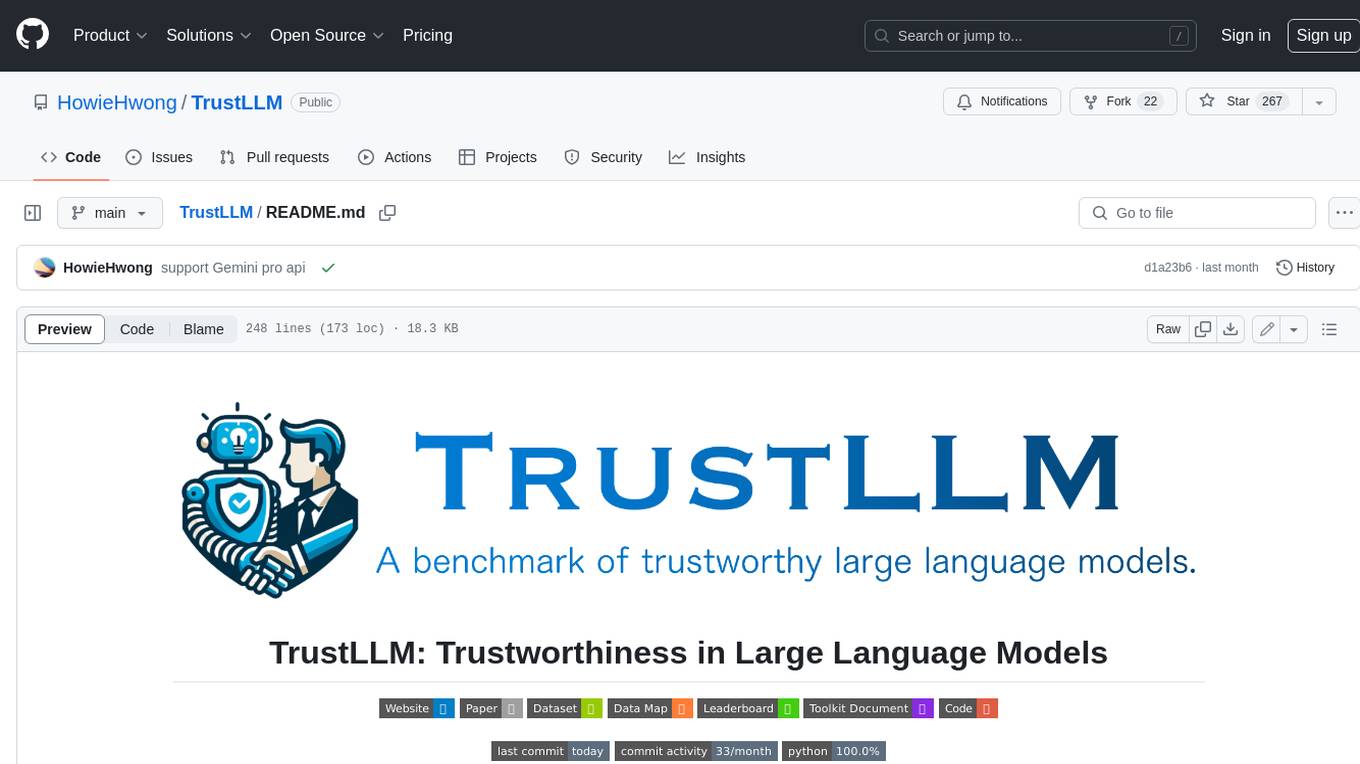
TrustLLM
TrustLLM is a comprehensive study of trustworthiness in LLMs, including principles for different dimensions of trustworthiness, established benchmark, evaluation, and analysis of trustworthiness for mainstream LLMs, and discussion of open challenges and future directions. Specifically, we first propose a set of principles for trustworthy LLMs that span eight different dimensions. Based on these principles, we further establish a benchmark across six dimensions including truthfulness, safety, fairness, robustness, privacy, and machine ethics. We then present a study evaluating 16 mainstream LLMs in TrustLLM, consisting of over 30 datasets. The document explains how to use the trustllm python package to help you assess the performance of your LLM in trustworthiness more quickly. For more details about TrustLLM, please refer to project website.
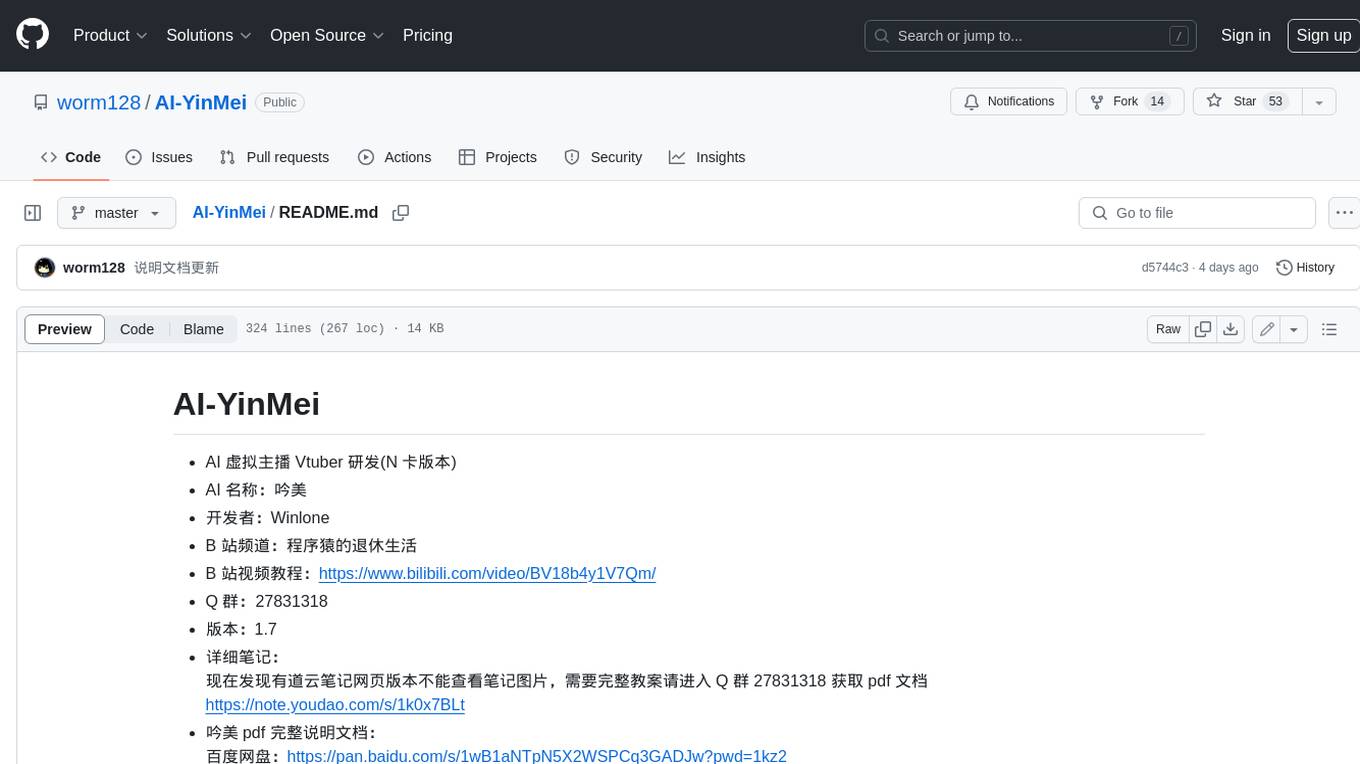
AI-YinMei
AI-YinMei is an AI virtual anchor Vtuber development tool (N card version). It supports fastgpt knowledge base chat dialogue, a complete set of solutions for LLM large language models: [fastgpt] + [one-api] + [Xinference], supports docking bilibili live broadcast barrage reply and entering live broadcast welcome speech, supports Microsoft edge-tts speech synthesis, supports Bert-VITS2 speech synthesis, supports GPT-SoVITS speech synthesis, supports expression control Vtuber Studio, supports painting stable-diffusion-webui output OBS live broadcast room, supports painting picture pornography public-NSFW-y-distinguish, supports search and image search service duckduckgo (requires magic Internet access), supports image search service Baidu image search (no magic Internet access), supports AI reply chat box [html plug-in], supports AI singing Auto-Convert-Music, supports playlist [html plug-in], supports dancing function, supports expression video playback, supports head touching action, supports gift smashing action, supports singing automatic start dancing function, chat and singing automatic cycle swing action, supports multi scene switching, background music switching, day and night automatic switching scene, supports open singing and painting, let AI automatically judge the content.